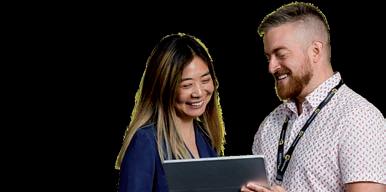











The Smarter Choice for Classrooms


The new 04 Series BenQ Boards with Google EDLA lets educators teach their way with intuitive software, easy single sign on and off, and access to Google apps. They streamline installation with fast onboarding, Active Directory support and our robust Device Management System allows for easy management of all boards remotely from a single, centralised platform.




Scan here to read more about BenQ’s Google EDLA Certified Boards https://www.benq.com/enau/education.html




 BenQ Board Pro RP04
BenQ Board Master RM04
BenQ Board Pro RP04
BenQ Board Master RM04








Our interactive displays are smart, simple and secure thanks to our innovative, uncompromising software. Our software is intuitive yet powerful enough for teachers and IT, making it an easy installation and ongoing usage.







Securely access your personal settings and cloud storage on any BenQ Board using your school account such as Google Workspace. Enable secure single sign-on (SSO) and sign-off to personalised settings with a single tap of your NFC card.




Easily monitor the status of all your BenQ devices on a single dashboard. With our device management system, you can install, update and remove apps, as well as push OTA updates on one or more displays.



Manage user accounts for all BenQ devices on one console. Sync your school’s Azure Active Directory, Google Workspace, and any other user directories to make management secure and easy for all administrators.

BenQ’s Management Software for Education
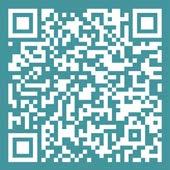 Centralised Device Management DMS
Account Management IAM
Cloud Storage and Personalisation AMS
Centralised Device Management DMS
Account Management IAM
Cloud Storage and Personalisation AMS
The school year is firmly under way, and with it, changes are re-shaping the landscape and impacting how teachers impart – and gain – knowledge.
In the first Education Matters Primary edition of the year, we delve into hybrid learning – not only as a teaching method but as a way for teachers to learn too – as a lead teacher from Margaret River Primary School illustrates in our cover story on teaching students the art of writing (page 26).
Experts also weigh into the challenges and benefits of implementing hybrid learning, including Lenovo’s head of emerging technology, and an academic in learning design at La Trobe University.
Alongside hybrid learning, we’re drilling into AI in the classroom. Found on page 16, this is unquestionably a hot topic in school staff rooms and corridors, following the release of the nation’s first Australian Framework for Generative AI in Schools, taking effective in Term 1 this year.

AI-powered learning will also take centre stage at EduTECH this year. Mr Sal Khan, the founder and CEO of Khan Academy, will present the keynote address in a speaking engagement exclusive to EduTECH. Mr Khan’s presentation will cover the impact he has had on learning through AI technologies, and explore the benefits of adaptive learning environments, such as how AI fosters tailored learning experiences for students and teachers.
To help plan your attendance at major education events like EduTECH, we’ve introduced a full-page calendar in the magazine this year. As official media partner to EduTECH and the National Education Summit, we’re also previewing these major events, starting with National Education Summit in this issue (page 42). It is taking place in two cities – Melbourne and Brisbane – in separate months later this year.
Change is also felt in education’s leading institutions; the Australian Curriculum, Assessment and Reporting Authority (ACARA) and the Australian Institute for Teaching and School Leadership (AITSL) have new acting CEOs while they actively recruit for permanent replacements. You can keep up with the sector’s latest appointments in our new ‘People On the Move’ section (page 58).
And there are changes at ground level too; eight new primary schools in Victoria opened their doors on the first day of Term 1 this year.
We hope you enjoy our first issue of the year. If you have news to share, or a topic you’d like us to cover, get in touch with me at rhiannon.bowman@primecreative.com.au.
Happy reading!
Rhiannon Bowman Editor – Education Matters rhiannon.bowman@primecreative.com.au

www.educationmattersmag.com.au
www.educationmattersmag.com.au/subscribe/
Chief Operating Officer: Christine Clancy christine.clancy@primecreative.com.au
Managing Editor: Myles Hume myles.hume@primecreative.com.au
Editor: Rhiannon Bowman rhiannon.bowman@primecreative.com.au
Design Production Manager: Michelle Weston
Art Director: Blake Storey
Designer: Michelle Weston
Media Bookings and Advertising: Kylie Nothrop kylie.nothrop@primecreative.com.au 0422 046 299
Client Success Manager: Glenn Delaney
Education Matters is a division of Prime Creative Media Pty. Ltd.
379 Docklands Dr, Docklands, VIC Ph: (+61 3) 9690 8766
Subscriptions
Education Matters is available by subscription from the publisher.
The rights of refusal are reserved by the publisher. Ph: (+61 3) 9690 8766
E: subscriptions@primecreative.com.au
Articles
All articles submitted for publication become the property of the publisher. We reserve the right to adjust any article to conform with the magazine format.
Cover Image Seven Steps
Copyright Education Matters is owned by Prime Creative Media Pty. Ltd. and published by John Murphy. All material in Education Matters is copyright and no part may be reproduced or copied in any form or by any means (graphic, electronic, or mechanical including information retrieval systems) without the written permission of the publisher. The Editor welcomes contributions but reserves the right to accept or reject any material. While every effort has been made to ensure the accuracy of information, Prime Creative Media will not accept responsibility for errors or omissions or for any consequenses arising from information published. The opinions of the magazine are not necessarily the opinions of, or endorsed by the publisher unless otherwise stated. All photographs of schools (including students) depicted in feature articles and advertisements throughout this magazine have been supplied to the publisher (and approved) by the contributing school. All material supplied by schools is done so with the understanding that such images will be published in





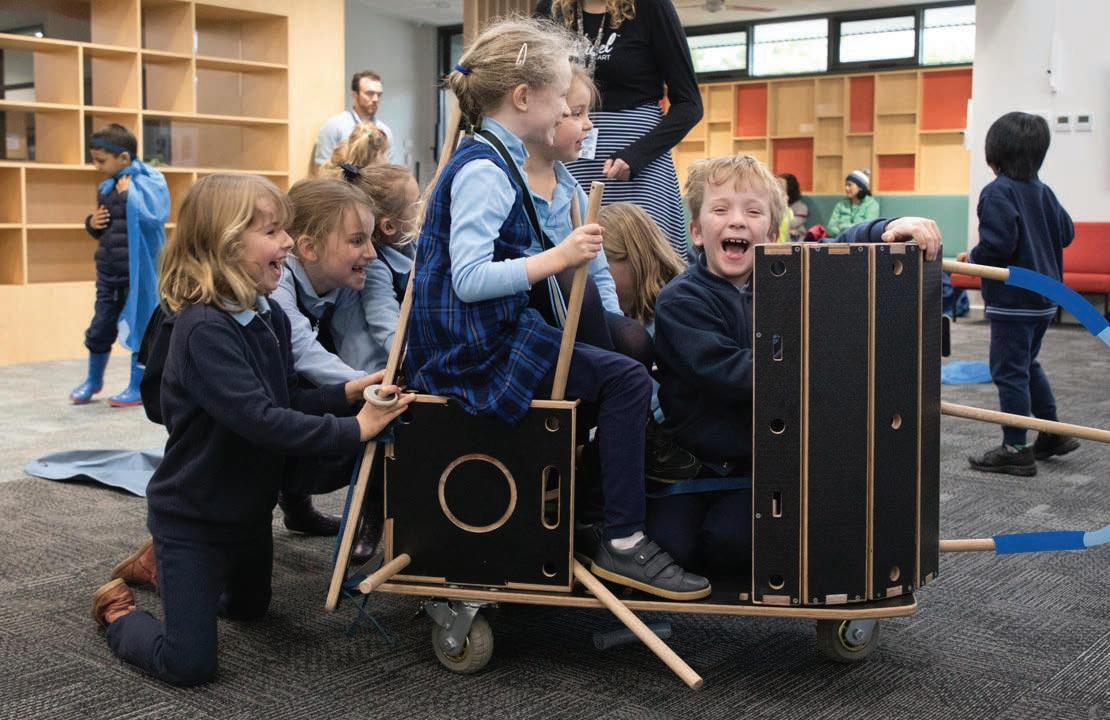






26 Cover story
Writing is always a challenge for schools, with teachers crying out for professional development to learn how to best teach it.
30 More mobile
BenQ’s next generation of large-format interactive screens are the first to offer full support for Google Mobile Services.
32 Hybrid learning
Blended and hybrid learning models are here to stay. But are teachers adequately prepared?
36 Bringing AI innovation to education
By automating daily tasks, AI can improve learning experiences, maximise efficiencies and reduce costs.
38 The ultimate solution for school gardening
JB Hi-Fi Education is partnering with an Australian-owned company to make learning in the horticultural space easy and fun.
40 Attracting teachers to ‘the Sunshine State’
Three teachers share why they chose Queensland to start or progress their teaching career.

The summit’s professional development seminars this year include two new topics that have drawn speakers with nearcelebrity status on social media.
45 First Nations cultures and histories
Reconciliation WA Education Manager Pamela Chatfield explains the peak body’s role in supporting educators.
46 Learning in the multiverse
A resource kit is resonating with teachers because it naturally facilitates many overlapping layers of learning.
48 True impact
Will the National School Reform Agreement Expert Panel’s recommendations be implemented in the spirit they were intended? asks Dr Naomi Barnes.
50 The power of self-reflection
Dr Stephen Brown reflects on his work with school leaders in different stages of their professional leadership development.
52 Rethinking data
Data collection and presentation are pivotal instruments for measuring both teacher and student performance, writes Dr Hugh Gundlach.








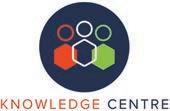


Organisers behind Australia’s largest education event have announced California-based Mr Sal Khan, the founder and CEO of Khan Academy, will present the keynote address in a speaking engagement exclusive to EduTECH.
EduTECH Australia is offering Education Matters readers an exclusive 10% discount off registration. Use the code EM10 when registering online.
Mr Khan’s presentation will drill down into the impact he has had on learning through AI technologies, and explore the benefits of adaptive learning environments, such as how AI fosters tailored learning experiences for both students and teachers.
He will also address the muchpublicised challenges associated with AI integration, and how they can be overcome.
Described as a true game-
changer in the field of education, Mr Khan founded Khan Academy in 2008, with a mission to provide a free, world-class education for anyone, anywhere. The Academy has more than 150 million registered users and is now piloting Khanmigo, an AI powered tool that acts as a personalised tutor and teaching assistant.
Mr Khan is also the founder of Khan Lab School, a non-profit laboratory school in Mountain View, California; a cofounder of schoolhouse.world website, a nonprofit that offers free tutoring over Zoom; and cofounder of Khan World School, a new non-profit online high school.
Mr Khan holds three degrees
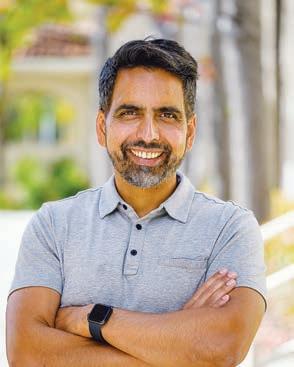
from Massachusetts Institute of Technology (MIT) and an MBA from Harvard. He has been profiled by 60 Minutes, featured on the cover of Forbes, and recognised as one of TIME’s 100 Most Influential People in the World.
EduTECH is Australia’s largest education event, bringing together the entire education ecosystem to discuss, debate, and evaluate the future of education. It will take place from 13-14 August at Melbourne Convention & Exhibition Centre. EM
Eight new primary schools and two specialist schools in Melbourne’s fast-growing suburbs opened their doors on the first day of Term 1 this year.
Premier Jacinta Allan and Minister for Education Ben Carroll officially opened
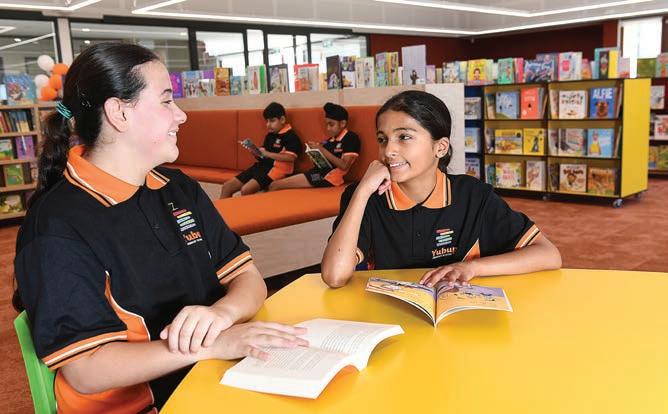
Mickleham’s new Yubup Primary School, named after a Woi-wurrung word meaning parakeet. It has capacity for 650 students and has modern facilities including a large library, a community hub with an indoor multi-use court, arts and music spaces, hard courts, a sports field and a canteen.
The State Government invested more than $527.2 million in the Victorian Budget 2022/23 to build the new primary and specialist schools, plus four new secondary schools, in locations such as Tarneit and Truganina in Melbourne’s outer west, Mickleham and Kalkallo in the outer north, and Clyde North and Officer in the city’s southeast. The schools have a combined total capacity of 8,846 students.
The eight new primary schools which opened in Term 1 include:
ubup Primary School, Mickleham –capacity for 650 students.
Wimba Primary School, Tarneit (includes kindergarten on school site) – capacity for
525 students.
• Warreen Primary School, Truganina (includes kindergarten on school site) –capacity for 650 students.
• Binap Primary School, Brookfield – capacity for 575 students, including 50 places for students with disability.
• Banum Warrik Primary School, Kalkallo –capacity for 525 students.
• Laa Yulta Primary School, Mambourin (includes kindergarten on school site) –capacity for 650 students.
• Topirum Primary School, Clyde North –capacity for 525 students.
• Kurmile Primary School, Officer – capacity for 650 students.
Two new specialist schools have also opened. Nganboo Borron School (pronounced naan-boo bore-on) in Werribee and Dharra School in Aintree, in the City of Melton in Melbourne’s west, each have capacity for 148 students. EM


“We need to transform the way we teach reading in school, so that every Australian child gets their best chance in life. This report shows how to do it.”
Dr Jordana HunterA report from the Grattan Institute shows that a third of Australian children can’t read proficiently.
Grattan Institute Education Program Director and report lead author, Dr Jordana Hunter, said Australia is failing these children.
“In the typical Australian school classroom of 24 students, eight can’t read well,” she said.
“It’s a preventable tragedy – the reason most of those students can’t read well enough is that we aren’t teaching them well enough.”
The report, The Reading Guarantee: How to give every child the best chance of success, calculates that for those students in school today who are hardest hit by poor reading performance, the cost to Australia is $40 billion over their lifetimes.
A key cause of Australia’s reading problem is decades of disagreement about how to teach reading. But the evidence is now clear.
According to the Grattan Institute, the ‘wholelanguage’ approach – which became popular in the 1970s and is based on the idea that learning to read is an easy, natural, unconscious process – does not work for all students.
“Its remnants should be banished from Australian schools. Instead, all schools should use the ‘structured literacy’ approach right through school, which includes a focus on phonics in the early years,” the Grattan Institute said.
It said students should learn to sound out the letters of each word, and teachers should read aloud rich literature to their class. Once students have mastered decoding new words, they still need explicit teaching to build up their background knowledge and vocabulary, so they can comprehend what they read – the ultimate goal of reading.
“Australia needs a reading revolution,” Dr Hunter said. “We need to transform the way we teach reading in school, so that every Australian child gets their best chance in life. This report shows how to do it.”
The Grattan report calls on all Australian state and territory governments, and Catholic and independent school sector leaders, to commit to a six-step ‘Reading Guarantee’. EM

Cost is top of mind for Australian students, according to 2023 Children’s Word of the Year.
An awareness of the impact of the current cost-of-living crisis and the importance of budgets is apparent among Australian students, resulting in ‘cost’ being awarded Oxford Australian 2023 Children’s Word of the Year.
Using data collected through the online program Writing Legends, which aims to improve students’ writing skills, Oxford University Press analysed over 32,800 children’s stories and over 3.3 million words written by primary and secondary school students across the country.
Concepts such as inflation and affordability
are filtering into students’ writing across many contexts, particularly among those in middle primary levels, with related words like ‘dollar(s)’, ‘money’, ‘bills’ and ‘price(s)’ being used frequently. ‘Cost’ alone appeared 33.57% more frequently in 2023 compared to 2020-2022.
Dr Damon Thomas, Senior Lecturer in the School of Education at the University of Queensland, explained that this increase is likely linked to the severe pressures on families brought on by rising interest rates, rent, utility prices and other general costs.
“With many families experiencing added financial stress in 2023 and into 2024, it makes perfect sense that children would be more
aware of issues related to affordability, and that navigating these stresses would be reflected in the stories they write,” he said.
“Increased prices of basic necessities, such as accommodation and groceries, have affected what and how much we consume, forcing a lot of parents and carers to consider lower cost or even free options for back-toschool and non-essential items and activities. The findings suggest increased cost of living affects the whole family.”
Other words shortlisted for Oxford Australian 2023 Children’s Word of the Year included: ‘leadership’, ‘fitness’, ‘teamwork’, ‘health’ and ‘pollution’. EM

How do you teach about Aboriginal and Torres Strait Islander history and cultures in your school or classroom?
Address the cross-curriculum priority with our Year 4 Reconciliation in Education Program!
Designed by experienced teachers.
Fully facilitated.
HASS curriculum-aligned.
Incursion and excursion options available. Co-facilitated by an Aboriginal person with cultural knowledge and a non-Aboriginal ally.


Contact us
Reconciliation WA
Email: admin@recwa.org.au
Phone: (08) 6552 6990
Website: www.recwa.org.au

How is lore taught in Aboriginal society?
Who makes the rules and what happens if they are broken?
The program explores these questions by building on students’ understanding of Civics and Citizenship: the importance and purpose of rules and laws in society.
Hands on resources are used to strengthen students’ knowledge and understanding of Aboriginal identities, his and culture in their local area. The lesson compares the Westminster law system in Australia with Aboriginal and Torres Strait Islander Lore systems.
tory
Address: The Constitutional Centre of WA, 40 Havelock Street, West Perth, Whadjuk Noongar Boodja, WA
Proudly

APPA President Angela Falkenberg highlights how primary educators contribute to ensuring students’ needs are met and the important role they play in sustaining the village that raises the child.

As an experienced teacher and leader in this space I know this to be true. Primary education is of fundamental importance, not just to learners but to the community at large. Primary is not just a stepping stone to university admission and post school careers, it is, of itself, nurturing and revealing of student strengths. It is also more than students being valued for their academic output. It is valuing children every day for the unique and abundant beings they are. We don’t just prepare them for the future; we are invested in valuing them for who they are right now.
their proposal to the council members. Their proposal and budget were agreed to, and the resulting nature play space was engaging and appreciated. It also revealed the benefit of engaging even young students in space design. If it is about them, why not plan with them?
Former President of the South Australian Primary Principals Association, Angela Falkenberg, was unanimously elected as president of APPA in May 2023, taking over the role from Malcolm Elliott. She has held senior school leadership positions across both primary and secondary schools and has extensive experience in the education of First Nation children. APPA provides a voice to over 7,600 public, Catholic and independent primary school principals across the country.
Primary’s work in promoting inclusion, equity and belonging can positively impact the broader community. Educators create space and opportunity for students to activate personal strengths and agency in finding solutions to challenges affecting them. It also builds an understanding of the importance of being outward facing and collaborating for the collective good. This increases community capability, provides an additional resource, and builds student wellbeing; for when we do good, we feel good.
Here are some examples: in one school, foundation and Year 1 students expressed a desire to have a play space that engaged them in exploring and climbing. Over a term they looked at pictures of play spaces, shared their experiences of play spaces they had enjoyed visiting and produced drawings of their vision of the ideal environment. With teacher help they synthesised these into a workable design for the space available, invited landscapers in to talk about possible costs and then attended a school council meeting to present
“Primary’s work in promoting inclusion, equity and belonging can positively impact the broader community. Educators create space and opportunity for students to activate personal strengths and agency in finding solutions to challenges affecting them.”
Preschool students in a country school noticed the footpaths and car parking design made it tricky for the nearby aged care residents to safely cross the road to read with them. They undertook traffic surveys (they counted the number of cars that used the street), mapped possible pathway changes using the sandpit as their ‘design wall’ and presented their thinking to the local government. It resulted in a change to where and how cars parked, widening of footpaths and the installation of more signage to call attention to children and elderly residents crossing the road.
In another example, primary students who became aware of the data around the rise in loneliness, created positive messages on cards and with cheery smiles handed them out at the local shopping centre to brighten
shopper’s day. The principal was brought to tears by messages she received from card recipients who told of the joy the connection with these students brought to their day and how, for some, it was the only human connection they experienced in a week.
Primary students across Australia support community environmental projects such as tree planting, cleaning waterways and undertaking bird counts. Students are also supported to raise funds for causes important to them (visit www. schoolaid.org.au to see many great examples).
In facilitating these opportunities, primary schools are building student skill in critical thinking and problem-solving, active learning, resilience, stress tolerance, and flexibility. These are skills that the World Economic Forum identifies as essential work skills.
“APPA is working to increase the community’s understanding of the role of the contemporary primary leader and teacher and the positive ways their work shapes and influences communities.”
All of this takes place in the context of healthy relationships, valuing perspectives, a willingness to listen to the other’s point of view and trust that their voice will be heard. Leaders and teachers model how to get a point across, how to build and maintain relationships and how to engage in constructive disagreement; in doing so they create a psychologically safe
environment for learning and wellbeing.
APPA is working to increase the community’s understanding of the role of the contemporary primary leader and teacher and the positive ways their work shapes and influences communities. As president, I view as important the need to highlight the considerable goodwill primary staff contribute to ensuring students’ needs are met (for example, providing breakfast clubs, overseeing in-school vision, and hearing checks, and connecting families to housing, financial or mental health support) and the important role they play in sustaining or even being the village that raises the child.
Primary leadership and teaching is a pillar for today and for tomorrow. I am proud to be part of this influential profession. EM


Joining at the end of 2023, I was straight into it when in December we updated our My School website with the NAPLAN currentyear results, alongside school attendance, profile and population information. It was the first time that NAPLAN school-level data was released in the same year as testing –a key benefit of holding NAPLAN earlier in the school year.
My School provides parents, carers and the wider community with a one-stop shop of nationally consistent school-level data about every one of the nearly 10,000 schools in Australia. However, I also believe that My School is an equally valuable resource for teachers and school leaders, offering key insights into school performance, achievements and characteristics.
The My School website received more than a million visits on launch day, which clearly demonstrates its value to the public, as well as highlighting ACARA’s ongoing commitment to strengthening accountability and transparency in education through making information more accessible.
By the time you read this column, the 2024 NAPLAN test window will have been completed. This year, almost 1.3 million students in Years 3, 5, 7 and 9 at more than 9,400 schools around Australia will take part in the NAPLAN assessments over a nine-day test period.
Stephen Gniel, Acting CEO of the Australian Curriculum, Assessment and Reporting Authority, is focusing on supporting schools to implement the Australian Curriculum and national assessments.
It’s a massive operation to prepare for the tests each year so I’d like to say a big thank you to our fantastic teachers, principals and school staff for their hard work in getting schools and students ready for this year’s NAPLAN.
Last year saw some significant changes to NAPLAN. It was the first year in which the tests moved from May to March, and we also introduced a new, simpler system for reporting results.
“My School provides parents, carers and the wider community with a one-stop shop of nationally consistent school-level data about every one of the nearly 10,000 schools in Australia.”
This means schools and teachers, parents and carers now get results much earlier in the school year so that the NAPLAN performance information can be used in addition to the school’s own assessments and the teacher’s knowledge of their students to ensure each student is supported in the way they need to be.
It is important to remember that NAPLAN is the only national assessment that students in all schools across Australia participate in. Not only does it show us whether young Australians are developing the literacy and numeracy skills that provide the critical foundation for learning and for their adult life, but it also helps government and education authorities know how education approaches are working and where changes and support might be needed.
On the curriculum front, ACARA’s dedicated curriculum team continues to support the implementation of the
Australian Curriculum, Version 9.0 by producing high-quality support resources for teachers and schools.
In recent months, we published seven new and updated Curriculum Connection resources on topics such as mental health and wellbeing, online safety, artificial intelligence, respectful relationships, food and wellbeing, outdoor learning and food and fibre.
These resources help teachers plan lessons highlighting the interrelationships across the dimensions of the Australian Curriculum, while also supporting schools to consider policies, procedures and partnerships.
We also published new student diversity pages on the Australian Curriculum, Version 9.0 website, which provide advice and resources to promote inclusive teaching and learning programs and help teachers respond to the diversity of students in their educational community.
Our Professional Learning Hub, which was launched almost a year ago, continues to support teachers in their planning practices by offering useful resources in each of the eight learning areas in the Curriculum. New sets of courses are presently in development and we’re aiming to release them in stages throughout 2024.
2024 is shaping up to be another busy year, ensuring we support our teachers and ultimately students across the country. EM
To keep up-to-date with ACARA’s work on the Australian Curriculum, the National Assessment Program and the reporting on schooling in Australia, follow it on Facebook or LinkedIn, and subscribe to its regular ACARA Update e-newsletter at www.acara.edu.au/news-and-media/ subscribe-to-acara-update.




Built on the new Windows 11 platform, Lenovo 13w Yoga supports instructors and administrators across every classroom, campus, and learning environment. Upgradable memory and storage options easily adapt to increased workloads, while an array of ports and connectivity options, including Wi-Fi 6 and optional LTE CAT16, o er faster connectivity while uploading lessons or connecting virtually with students and peers.

techtoday.lenovo.com/education

Currently there is little research on the benefits of students and teachers using generative AI.

South Australia has front-footed the adoption of AI-driven tech in the classroom since the rise of ChatGPT. Two leading academics at the University of Adelaide discuss the next growth phase of AI literacy and its role in STEM education.
In July last year, students at several secondary government schools in South Australia began trialling an artificial intelligence (AI) app – the first of its kind in the nation – with the safety of students a key focus.
The custom ChatGPT-style tool –called EdChat – was introduced by South Australia’s Department for Education for an eight-week trial. At the time, South Australia was the only jurisdiction in the country not to have banned AI in schools.
The app, which has been designed in partnership with Microsoft, showed students how to use AI to support their studies, while also having parameters in place to protect them from inappropriate information.
In addition to trialling the app, schools
and parents received guidance around the use of AI in education more broadly. This included outlining ways AI can provide educational opportunities through chatbots, image and video generation and intelligent tutoring systems, as well as guidance about managing risks.
In August, in a submission to the Parliament of South Australia – Select Committee on Artificial Intelligence (AI), the SA Department for Education explained how the trial evolved.
“Since the release of ChatGPT in November 2022, the department has been reviewing ways to support the responsible and effective use of ChatGPT and other related AI capable technologies. It recognises that in order to realise some
of the benefits, the access and use of generative AI needs to be made more appropriate for classrooms and students,” it wrote.
“Early in 2023, the department commenced a proof of concept with Microsoft to integrate the ‘Open AI’ platform (the platform currently hosting ChatGPT) into the department’s Microsoft Azure Tenancy (private cloud). This enabled the department to produce its own version of a generative AI chatbot, like ChatGPT.”
In its submission, the department said it recognises that many schools are seeking guidance on the opportunities and challenges associated with generative AI, as well as on practical classroom uses.
“The department will continue to

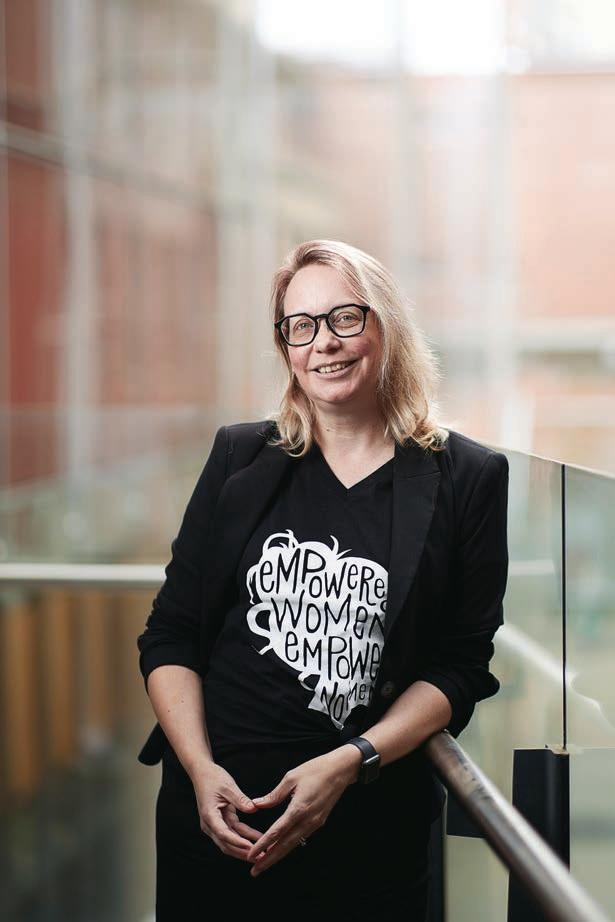
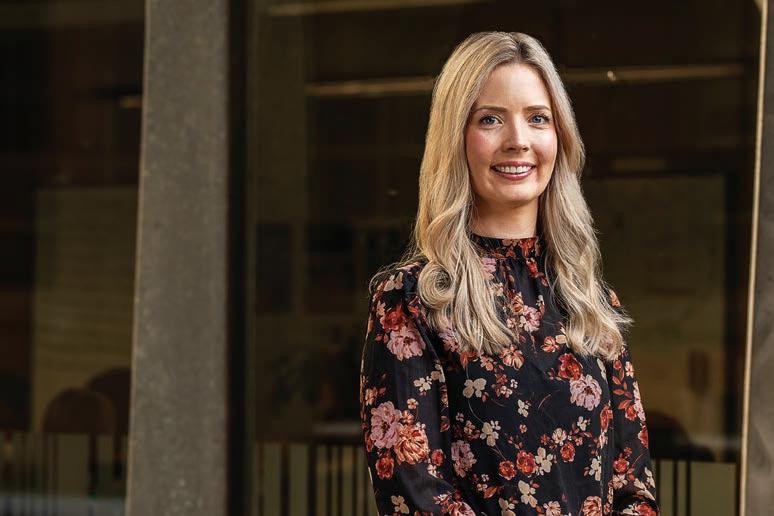
Another tool in the toolbox
Falkner and Vivian note that AI is already embedded in many of the technologies educators and their students use today.
“Think about generative AI as being another tool in a teaching and learning toolbox. Educators can take small steps to try AI as a tool to support teaching and ways to introduce it in the classroom,” they say.
“Generative AI has potential to provide efficiencies in learning and teaching, particularly to educators who are often timepoor and working with large classes of diverse student learners.”
AI can help educators with their workload – there are a range of tools available using generative AI such as lesson planners, slideshow creators, and tools like ChatGPT or BingChat to support lesson planning, assessment and differentiated instruction.
world will need to grapple with over time.”
Professor Katrina Falkner and Dr Rebecca Vivian, leading academics from the University of Adelaide, agree South Australia has embraced curiosity and innovation with generative AI.
Falkner, who is executive dean of the Faculty of Sciences, Engineering and Technology, and Vivian – senior research fellow and project lead in the Computer Science Education Research (CSER) Group – say they have recently seen the Australian education sector more broadly make moves that proactively consider the safe and responsible adoption of generative AI in schools.
They are referring to the release in December 2023 of the nation’s first Australian Framework for Generative Artificial Intelligence in Schools, implemented in Term 1 2024.
“Representatives from all states and territories have had input into the development of the framework to guide school communities. It provides a framework for guiding not only considerations for teaching and learning but the safe, fair, and ethical use of generative AI,” they say.
“TEQSA says there is little value in ignoring AI or implementing a blanket ban, but acknowledges the complexities that generative AI introduces, particularly around assessment and the need for building teacher capability.”
A separate government report, Assessment reform for the age of artificial intelligence, published by the Tertiary Education Quality and Standards Agency (TEQSA) in November 2023, addresses how the emergence of generative AI, while creating new possibilities for learning and teaching, has exacerbated existing assessment challenges within higher education.
“TEQSA says there is little value in ignoring AI or implementing a blanket ban, but acknowledges the complexities that generative AI introduces, particularly around assessment and the need for building teacher capability,” Falkner and Vivian say.
“Being aware of AI, knowing where it can help, but also recognising where it may pose problems for students, is an advantage and it is exciting to see Australia embracing how we might collectively approach this as schools go back in 2024.”
“These tools won’t replace teachers and they still require educator’s expertise in crafting and making use of the tool effectively and to contextualise its use, but they can save teachers valuable time and operate like an assistive tool,” Falkner and Vivian suggest.
“Likewise, leadership and school administration can leverage tools to reduce administration burdens.”


“This may be a time to review and consider assessment in your classroom and to have transparent discussions with students about expectations and use of generative AI for learning and assessment,” Falkner and Vivian say.
“Always check in with leadership or jurisdictions about what policies are in place and take care to consider privacy and data policies for the tools you are considering –avoid tools that will collect student and school data. There are a number of resources available to help teachers teach AI in classrooms, like the Digital Technologies Hub and CSER STEM Professional Learning programs.”
Speaking from their combined experience running a national Digital Technologies education program at the University of Adelaide since 2014, Falkner and Vivian say investing in upskilling educators can have the biggest returns.
“They [educators] go on to impact students year after year, and teachers are one of the key influencers of students’ study and career
remote and disadvantaged communities is essential to ensure generative AI use is a level playing field for all Australians and students.”
But it goes further than that.
“In addition to using the tools, educators and students need to understand to some extent how underpinning AI technology works, how it is developed and the limitations of the technology. For example, AI algorithms and datasets can create biases and that information generated is not always accurate, both of which require critical analysis of outcomes as a key step in using AI tools,” the women caution.
“By understanding data and privacy implications with generative AI tools, educators can also make informed decisions that protect the privacy of them and their students.”
There are several programs across Australia, including Early Learning STEM Australia, Education Services Australia’s Digital Technologies Hub, the University of Adelaide’s CSER STEM Professional Learning Program, and CSIRO’s STEM Professionals in Schools program that provide resources and support
use of generative AI, including improving contextualised learning and teaching prompts to maximise output and evidence-based learning and teaching strategies.
“We’ve seen challenges and complexity around the use of generative AI by students in assessment, and teachers will require training in how to rethink assessment with generative AI.”
AI has already fundamentally changed our workforce and the skills that the future workforce will need will increasingly rely on AI literacy, according to Falkner and Vivian.
They believe the demand for people with AI skills will only continue to grow.
“STEM skills are critical as building blocks for AI literacy and a strong STEM workforce enables Australia to be a world leader in developing AI technology enhanced innovation,” they say.
“Investment in STEM is key to ensure they are a priority in schools and that students, particularly underrepresented students, are
Addressing inequities in education and access
underpins Professor Falkner’s work. She leads the development of the Computer Science Education Research (CSER) Group’s open online courses for Australian teachers to help prepare them for the Digital Technologies Curriculum, and leads the national CSER Digital Technologies Education Program, designed to support Australian teachers in teaching Computer Science – to date, supporting more than 45,000 teachers across Australia.
Working alongside her in the CSER Group, Dr Vivian is interested in understanding how people learn – their cognitive processes, interactions, self-efficacy and self-regulated learning skills – as well as investigating how to harness technology to enhance and innovate learning experiences.
“We have been tracking educators’ use of generative AI in schools within education communities, listening and learning about how they are using the technology and their needs, and working with government to support AI in school initiatives,” Falkner and Vivian explain.
“Our CSER STEM Professional Learning program has been supporting educators to upskill in emerging technologies and providing schools access to free digital technologies kits, including AI, for a number of years now with funding from partners like Google and the Australian Government Department of Education.”
In early 2024, Falkner and Vivian will release an updated version of CSER’s courses in Teaching AI in Primary and Secondary classrooms, which previously ran for a few years pre-ChatGPT.
“This update will provide a foundation for educators in understanding how AI works and how they can teach students about AI. Our evaluation of the previous course found that by completing the course, educators broadened and deepened their understanding of AI and it gave them the confidence to teach AI in classrooms using age-appropriate activities,” they say.
“Our team are always exploring evidence-based ways of teaching and learning with technologies, and this is only the start of understanding how we can maximise generative AI in schools. Currently there is little research on the benefits of students and teachers using generative AI and we are open to partnering with industry and school sectors to explore technologyenhanced learning.”
choosing STEM subjects. Research shows that students need to be exposed to STEM early in schooling as they start to form opinions about STEM subjects in the early primary years. We need to upskill and support our educators to engage students early in school with STEM and AI.”
Students might be dabbling in using generative AI for learning, but this does not mean they know how to use it most effectively.
“Being able to help students make the most of any digital tool is a part of learning. It’s also more than just learning about how to use AI tools. An important aspect is developing students’ critical thinking and analytical skills that can help them to question, challenge and improve the reliability and bias of information presented by generative AI,” Falkner and Vivian point out.
“As TEQSA suggests [in Assessment reform for the age of artificial intelligence], if critical, ethical, and productive engagement with AI is taught and integrated into assessment tasks in
meaningful ways then students will regard it as an essential part of their learning, rather than a supplementary component.”
Falkner and Vivian have seen cases at university and in schools where educators allow the use of generative AI as part of their process of learning, where they are transparent about its use in assessment tasks.
“It all comes down to trust and transparency. By promoting core digital literacy and AI awareness from an early age, including an understanding of basic AI concepts, tool usage, and an awareness of ethical considerations, the Australian education sector can help to shape the development and deployment of AI in a responsible manner across society,” they say.
It’s here to stay
“Generative AI is here, and we all need to learn to live and work with AI,” Falkner and Vivian say, but it won’t – can’t – replace the teacher in the classroom.
In their view, teachers are experts in teaching and subject matter and still play an irreplaceable role in students’ education.
“The narrative around AI for education needs to be one of empowerment for teachers, while acknowledging the valuable role they play in education outcomes and the wellbeing of our students,” they say.
“TEQSA’s advice is to incorporate these new technologies in a thoughtful and evidenceinformed manner. The Australian education sector needs to ensure generative AI technology and training is accessible to all Australian educators and their students, so they are building their capability in these critical skills, and the ability to critically analyse outputs.”
Falkner and Vivian caution schools against jumping into purchasing AI generative software as tools need to be selected with caution.
“We will see more and more generative AI being built into existing tools schools already use. Generative AI tools need to be appropriate and sensitive to our diverse Australian populations, including the cultural rights of First Nations Australians, so it is important that work undertaken to determine adoption in schools includes diverse voices and perspectives.”
Plagiarism and cheating is also still a major concern.
“Currently there is no reliable way to detect cheating with AI, and iterations of generative AI will only get better. AI presents an opportunity for how we approach assessment in schools and consideration to how assessment can also support students to learn and work with AI in their future careers.
“Generative AI education needs to focus not only on the ability to use AI tools but also more broadly the ethics, limitations, biases, and implications of AI – skills that transcend the version of generative AI being used,” Falkner and Vivian say.
In their opinion, the Australian Framework for Generative Artificial Intelligence in Schools will help guide all school communities in harnessing the potential benefits to teaching and learning generative AI, while navigating the risks.
“As generative AI will evolve, education sectors will need to continue to revise, adapt and grow with the technology to ensure policies and practice keeps pace with the technological advancements and research evidence,” they say. EM

Education and learning have been happening on the site of Kellyville Public School for thousands of years with its First Nations families passing on knowledge about the land and culture, says Principal Jenny Walker.
Kellyville Public School on Darug Country was a finalist in the 2023 Narragunnawali Awards. Reconciliation Australia holds the awards program every two years to recognise outstanding commitment to reconciliation in education. A special feature at Kellyville Public School is the Coming Together Bridge, a symbol of reconciliation physically linking two points in the Guganagina Ngurang, the Place of Kookaburras.
What is the history of the school?
Surrounded by farmland, Kellyville Public School was formally established in 1873 with 39 students enrolled. The prolific birdlife present in the local area prompted the choice of a kookaburra for the school logo. ‘Play the Game’ was later adopted as the school motto.
Today the school is surrounded by housing development and has more than 865 students enrolled with more than

65% coming from a non-English speaking background. Some families are new to Kellyville – and Australia, others have been settled here for two, three or four generations, but one thing we have in common is that many of us work, live and are being educated on Darug Country, this ancient land. That is what unites us all together.
Aboriginal students over the years were not part of the enrolment at Kellyville Public School due to government laws. During last century the children from Marella Mission, which was sited at the nearby Bernie Mullane sports oval, were not allowed to attend Kellyville Public School and had to travel to Castle Hill Public School. They were not educated and were told to ‘look out the window’. They were not allowed to speak their language and were treated unfairly and with no respect.
How do you provide support and leadership to your staff?
Over the time I have been principal of Kellyville Public School I have built teams across the school, developing leadership within these teams. The Aboriginal Education team is one such team.
At the start of each year, an Acknowledgement of Country is presented to the staff. It is a time of reflection and learning and challenges all staff (teaching and nonteaching) at the school.
Through Professional Development each year, and encouragement to further their knowledge over many years, there is a desire to unlearn and relearn the truth of our history locally and nationally. This desire has flamed a willingness to find the true history of our land, not only to teach it but to acknowledge this in the wider community.
What role do you play in the day-to-day activities of your students?
As Principal of Kellyville Public School my role is to facilitate the opportunities for learning to be real and truthful. Staff at Kellyville have a pivotal role in the education of all students to bring the truth to them. They have high expectations for all children to reach their potential. This is achieved through student growth and attainment, teacher practice and collaboration, and community connections and wellbeing.

What traits make for an effective and successful leader in education today?
The role of the principal is one of service, leadership and reward. Listen with an open mind, know your staff and have high expectations of them, know your students and their dreams. As a principal you must learn with your school to share the ‘vision and journey’ of the school.
What has been your most memorable moment either as a teacher or specifically in the role of principal?
During the past 12 months Kellyville has celebrated its 150th anniversary, and was one of only three Australian schools (only school from NSW and only public school) to be selected as finalists in the 2023 Narragunnawali Awards.
But these are events only. It is the learning and hard work that has been conducted beforehand – sometimes more than 10 years in the making – of which I am proud. To see the growth in all staff and students, for staff to have high expectations and students to gain the skills to reach their potential are the highlights.
At Kellyville Public School, we empower students to acquire, demonstrate, articulate, and value knowledge and skills that will support them as lifelong, self-directed learners enabling them to participate in and contribute to the global world.
High expectations are set to meet individual student needs whilst providing high quality learning experiences that enable students to excel, connect, succeed and thrive.

What does Reconciliation mean to you?
Reconciliation is more than a word; it is about people from many generations, it is about my family, it is about action. It is not history that is in the past that we read about or see in the museum – it is an ongoing journey and it is a privilege to be involved.
There was no reconciliation movement with previous generations. In my, and my children’s, generations we are part of the journey. It is a journey we all need to be part of – but not everyone is on the journey yet.
Reconciliation is about people and trust, respect, recognition, values. Reconciliation comes from the heart. It is about a truthful knowledge, justice, acceptance, equality, equity, integrity, unity and healing. Without a truthful understanding of our history, our work together cannot progress for all of us to have true reconciliation.
What is a RAP and why is it important for schools to take part in one?
A RAP is a Reconciliation Action Plan. It is a practical plan to develop reconciliation between our First Australians and the wider community. It is essential schools create a RAP to ensure Aboriginal and Torres Strait Islander perspectives are authentically taught. A RAP creates opportunities for staff, students, and the wider community to understand and participate in reconciliation. Education is an ongoing journey and so is the process of reconciliation.

What does Kellyville Public School do as part of its RAP?
Kellyville Public School builds positive relationships with our First Australians. We are committed to providing opportunities for our Aboriginal and Torres Strait Islander students. These students are given the opportunity to be part of our Custodians of the Place of Kookaburras project which allows them to share their knowledge with the wider school community.
What feedback do you get from the students?
The feedback has always been positive and the students have a great sense of pride as this special place (the Place of Kookaburras) was designed, built and is maintained by them. The students like learning outdoors on Country and sharing knowledge orally. They have learnt

how our First Nations people were our first scientists, bakers, and astronomers to name a few. They also understand the importance of Country and caring for Country. Our First Nations students have developed a deeper understanding of their culture and are proud to share their knowledge and stories.
How do students react when they find out their nearby sports oval used to be an Aboriginal mission?
The students are shocked and often confused as they have difficulty understanding why these children were taken from their families and treated so badly. We have found that their parents and the wider community are horrified that the Marella Mission was at the nearby Bernie Mullane sports oval and only closed in 1986. They have asked, “Why am I only hearing about it now?”.

Why is history important for them to know?
It is essential true history is taught to all students and shared with the wider community. We need to be aware of the wrongs of the past so we can prevent them from happening again. Understanding history allows us to understand intergenerational trauma and current-day issues with empathy. Today, our First Nations people are to always be treated with respect and have the same opportunities as all Australians.
Can you tell me about the pictorial timeline Kellyville has created?
The Kellyville timeline was created to provide the community with a comprehensive understanding of Kellyville’s history. The timeline is a valuable teaching tool – it allows teachers to conduct lessons outdoors, the students can learn about history and then make

connections within the school.
The timeline plays a significant role in our RAP as it shows the true history of the Darug people spanning the last 65,000 years. It highlights the importance of Country, culture, and the profound impacts of colonisation.
Key historical events, such as the Marella Mission and the stolen generation, are acknowledged as part of our history. The timeline is in a prominent position in the school and is visible to all visitors.
Can you tell me about the Coming Together Bridge?
In 2013, as part of a project involving Year 3 and 4 students designing the Place of Kookaburras, the idea of adding a creek was discussed. Recognising safety concerns related to having an actual body of water, it was decided to create a dry creek bed. Through inquiry-based learning we knew that grinding grooves were traditionally situated near water sources, so it was appropriate to have a dry creek bed.
Adjacent to this area was the Akuna Garden, named after the Aboriginal word for moving forward. This garden incorporated introduced plant species. In contrast, the Place of Kookaburras focused on native plant species. To symbolise the connection between
the two gardens, the idea of constructing a bridge was proposed.
Selected students took on the task of building the bridge. When Aunty Edna Watson (Darug language custodian) visited to check on our progress, she named the bridge the ‘Coming Together Bridge’ (Garribirri Ngyrlangai). This bridge, linking the Akuna Garden and the Place of Kookaburras, has since evolved into a powerful symbol of reconciliation, representing the merging of past and present. It holds a significant place in our Reconciliation Action Plan (RAP) artwork.
What is next for Kellyville in terms of Indigenous education and reconciliation?
Our journey is not ended and at Kellyville Public school we are part of strengthening the relationship between Aboriginal and Torres Strait Islander peoples and nonindigenous Australians.
We invite you to continue to walk the journey of reconciliation for the country where there will be a future of reconciliation of mutual respect, mutual resolve mutual responsibility and better future for all. EM
*Produced with assistance from Kellyville Public School staff member Jenny Heffernan.
When Mrs Melaine Bubner farewelled her Year 3 students at Hope Christian College in Craigmore, South Australia, at the end of 2023, it was for the last time.
This year, she is teaching Home Economics and Food and Hospitality to Hope’s students in Years 6 to 12, drawing on her wealth of experience in the hospitality industry.
She has been teaching at Hope Christian College since graduating with a Bachelor of Primary Education six years ago, at the age of 40.
“I did about six months of relief teaching in a few different schools after graduating and was then offered a contract for a year here – and never left,” she says.
While her path into teaching has been unconventional, the skills she acquired during her years in the hospitality profession have transferred into her second career as a teacher.
“When I finished school, I got into nursing, but I chose to do hospitality –which 30 years later, comes back into play. I worked in the hospitality industry for several years before becoming a stay-at-home mum for five years,” she says.
When her youngest child started kindergarten, a local school offered Mrs Bubner a dual role managing the uniform shop and providing Home Economics support, which morphed into an administration role, including establishing the school’s Parents and Friends Association.
“I was juggling four different hats at the school for several years. Then, at a staff breakfast one year, the teachers were talking about the need for help in their sister school in Papua New Guinea,” she recalls.
Mrs Bubner wanted to help – but they needed teachers, not support staff. Several conversations with her colleagues about her potential to train as a teacher soon followed.
“I was 35 at the time. I took some steps towards looking into what I’d have to do to become a teacher. I was nervous about the entry process to university and went down the pathway of Open Universities,” she says.

Mrs Bubner commenced a Bachelor of Primary Education part time, juggling two young children and her multiple roles at the local school, before completing the last two years full time.
She was offered several contracts when she graduated, ultimately accepting an offer from Hope Christian College, a co-ed Prep to Year 12 independent school.
“I initially applied for a Year 5 position, but it was offered to someone else. Six weeks later, they rang me back as another Year 5 position had become available –would I be interested? I said yes. I was very flexible. I think that is the key to teaching; being flexible in what you will do. I was prepared to go anywhere and do anything,” she says.
No stranger to the school environment, Mrs Bubner completed a series of placements during her training, and worked as a relief teacher at several schools once qualified. Although she is familiar with the classroom, she knows teaching middle and senior school students will be different to greeting her class of eight-year-olds every day.
“High school is a very different space to primary school. Essentially, they’re two very different jobs – which I’m about to find out,” she says.
“I think when you do different roles in schools, you still don’t really appreciate what other roles are doing. You might chat over a coffee with other teachers, but unless you’re doing their specific role, you really don’t understand what it is.”
Despite her years of workplace experience – including in the pressure-cooker environment of corporate hospitality – she is not immune to feeling overwhelmed at times.
“Teaching is many, many balls in the air that you’re juggling. And occasionally, it gets overwhelming. The pressure is overwhelming at times. Some weeks all my ducks are in a row. And then other weeks, the ducks are running everywhere.”
Some people think teachers teach the same material year after year – but that is simply not true, she says.
“I’ve taught Year 3 for the last four years and we are constantly changing our program to make it better, more interesting, more relevant. Not one year has been a repeat of the year before.
“I get bored easily. I’m always challenging myself to the next thing. Teaching has never been boring,” she says.
Mrs Bubner is looking forward to sharing her enthusiasm for hospitality with her new student cohort.
“I have a passion for hospitality. It is definitely a specialised area. I studied at
Regency Hotel School, a well-known hospitality school in Adelaide, and my first job after graduating was in a restaurant at Adelaide Zoo,” she says.
Mrs Bubner also completed a TAFE certificate in hospitality and worked at the Hyatt Adelaide (now called InterContinental Adelaide) and the Adelaide Convention Centre.
She hopes to impart some of the skills she acquired in corporate hospitality to her students at Hope Christian College.
“Not everyone is going to be a doctor or a lawyer, but everyone needs to cook and eat. I’m excited to teach everything from basic nutrition and healthy eating through to hospitality skills. Hospitality offers transferable skills; customer service and attention to detail, for example, can be transferred into any industry.”
Mrs Bubner recalls her own experience as a student at school, and the potential of teachers to influence students’ future career path.
“I changed schools halfway through year
nine. I was part of a special music program at a public school, which cocooned us from the ‘wildness’ of the rest of the school, but my parents decided the school wasn’t a good fit for me,” she says.
“I got a music scholarship to go to Concordia College, which was at the opposite end of the socio-economic scale. It was chalk and cheese, compared to the public school. I did home economics all the way through Concordia College. There was a teacher there, Mrs James, who was very passionate about her cooking – she would probably be someone who did inspire my journey.”
Now acting in the role of ‘Mrs James’ to her
“It wasn’t a problem for me coming in as a mature-age teacher. In fact, because I was a parent, I had that set of skills under my belt.”
own students, Mrs Bubner says students “do stuff” that regularly melt her heart. Last year, she was surprised to receive a collage from a class of former students.
“I had a handful of really difficult students who were making my life quite sad. That’s the reality of teaching. You can have excellent kids but it’s not always an easy journey,” she says.
“The teacher of a class I taught two years earlier must have mentioned to the students that I was having a bit of a hard time. The students coloured in this collage and stuck it all together, and they all wrote individual messages on the back, recalling memories of when I taught them.
“More recently, I got an email from a colleague, as one of my former students had written a paragraph about how I made her day when I smiled at her. That’s why we do this. We want kids to feel loved and supported, and like they’re worthy. Life is valuable, regardless of academic performance.”

Mrs Bubner is part of the ‘Be that teacher’ campaign, launched nationally in October 2023 to raise the status of the teaching profession across the country.
The campaign is a joint initiative of Federal and State and Territory Governments, and features eight real school teachers – one from each jurisdiction.
The campaign is designed to encourage more Australians to want to be ‘that’ teacher who helped them to aim higher, be braver and work harder.
Mrs Bubner is one of eight real teachers whose stories feature in the campaign which runs across social media, billboards, bus stops and other outdoor locations.
“Often the government is trying to target school-leavers to become teachers. But I can highly recommend targeting a more mature age group; people whose kids are now at school, and they’re looking for their next move,” she says.
“It wasn’t a problem for me coming in as a mature-age teacher. In fact, because I was a parent, I had that set of skills under my belt. I think that really adds to a teacher’s ability.” EM
Writing is always a challenge for schools, with teachers crying out for professional development on effective writing instruction. Seven Steps to Writing Success has the answer – as Dawn Veary at Margaret River Primary School discovered.

Four years ago, Dawn Veary, a Level 3 classroom teacher with more than 30 years’ experience, was looking for “that special something” to engage her most reluctant students in writing.
“When you live 400kms from Perth, it is expensive and difficult to participate in quality PD, so I was delighted to find out that Seven Steps offered online workshops. They’d re-configured their face-to-face
learnt with my Year 3 students. This was life-changing for both my students and my teaching. Their excitement and enthusiasm was immediate,” she says.

Nothing was radically new about what she was teaching her students, Ms Veary says, but everything was new about how she was teaching them.
“It’s fascinating to watch your students progress and transform before your eyes. By the end of that first year, I could honestly say that I no longer had a single reluctant writer in my Year 3 class, and what’s more, it was those same students who were now clamouring to share their writing with the
Based on this success, Ms Veary was eager to introduce more of her colleagues to this style of writing instruction.
“At the time, the school had just under 1,000 students and we were comfortable with our students’ writing performance, but I knew we could do better. I wanted all our students to experience the emotional wellbeing of not feeling threatened by writing tasks but becoming capable and
In 2022, Ms Veary completed Seven Steps’ Workshop Two online which switched focus from narrative writing to persuasive
“This workshop was intensive, and I was happy to be spacing the sessions across three weeks, as it gave me time to absorb what I’d learnt and implement it in my class to fully understand how it could integrate with my school’s pedagogy of inquiry-based learning,” she says.


The tools and strategies she learnt greatly impacted her students’ writing.
“Writing collaboratively was an amazing personal growth experience for all students. In the mixed ability groups, weaker students ‘stepped up’ to write stronger texts using the shared resources of information. Peers were able to support each other to produce a highlevel piece of informative writing.”
Ms Veary continued to encourage her school to see the benefits of the program.
“In my quest to make this a whole-school experience, I continued to share outcomes with my colleagues – classroom anecdotes, students’ written work and hard data from Seven Steps Track Your Success tools. I wanted them to see the impact the approach was having on my students’ writing,” she says.
“It was important that my colleagues saw it as something integral to what we were already doing, and not ‘another new initiative’ that increased workload or would be a passing fad. I shared some of the tools and strategies I’d used with my Year 3 students, and my colleagues were excited about the potential and saw how closely aligned it was with our school’s pedagogy.”
Ms Veary says the principal and deputy principal both saw the improvements in student writing and the potential benefits of all staff undertaking training. So, the school invested in a whole-school face-to-face PD in the final term of 2023.
“Now, in 2024, four Seven Steps ambassadors are actively teaching the Seven Steps, and three leaders across junior, middle and senior level are ready to offer support and encouragement. We also have a supportive
acting principal who has backed this program from the start,” Ms Veary says.
“[This year] will be a critical year to build on last term’s professional development. I am passionate about the program and have seen firsthand the benefits in my own classroom, first with Year 3 students and now that I am teaching Year 6, the benefits have been exponential. This is a change-agent for teaching writing.”
Tackling writing decline step-by-step Quality training and a consistent whole-school approach to writing are now more important than ever with NAPLAN data showing that Australian literacy results are declining, particularly in writing. Last year, about a third of students performed below proficiency in writing, with the need for additional support increasing each year.
While the data is disheartening, there are plenty of schools and classrooms that are seeing a very different trend in their writing results, and for many, the secret to their success is Seven Steps to Writing Success.
Developed by international author and former teacher Jen McVeity, OAM, the Seven Steps approach explicitly teaches students the skills that professional authors use.
“All I did was break down the techniques of effective writing to make them easier to teach; more accessible, more practical,” says Ms McVeity.
“But most importantly – I wanted to make it fun. The key is to unlock the joy and power of writing for kids, then they’re unstoppable.”
Ms McVeity’s work in this field contributed to her being awarded an Order of Australia (OAM) in the King’s Birthday Honours last year for services to literacy.
Since it was founded in 2005, the Seven Steps to Writing Success has trained more than 45,000 teachers in half of Australian schools –predominantly primary school teachers. That means over two million students in Australia have been taught the Seven Steps.
Schools using the program have seen a 10 per cent improvement in student writing in as little as 10 weeks – the equivalent of a two-year increase in writing ability.
They have also see an improvement in their NAPLAN results. NAPLAN values great writing, with eight of the 10 NAPLAN marking criteria focusing on the authorial writing skills covered by the Seven Steps approach.
Schools also report that teachers feel more confident teaching writing, and student engagement soars.
The company is getting major industry recognition for the difference it’s making and the quality of what it delivers. It was awarded:
• EPAA Primary Publisher of the Year 2023 and 2022
• Teacher Hub, Seven Steps’ subscription platform – shortlisted in the Digital Education Awards 2023
• The Educator’s 5-Star Service Provider Award in 2023 and 2022.
education matters primary
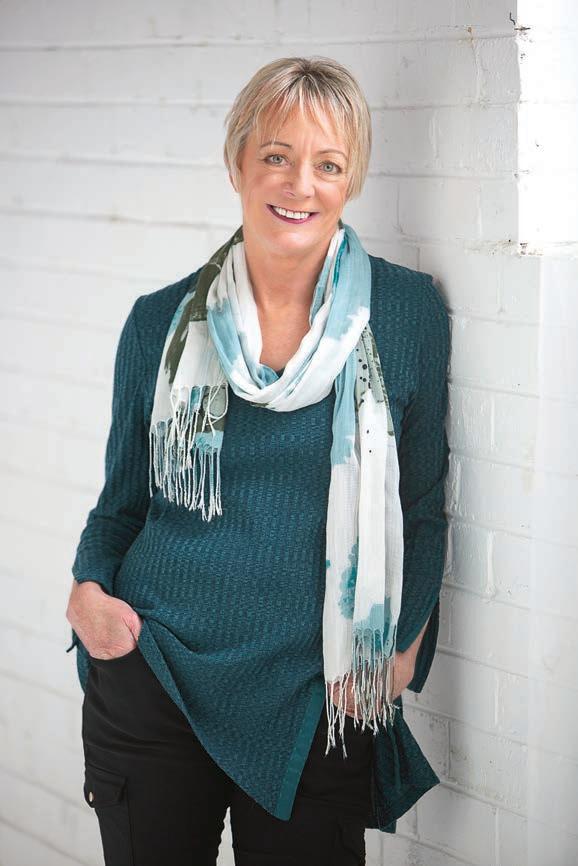 Images: Seven Steps
More than two million students in Australia can write more effectively as a result of the Seven Steps program.
Seven Steps founder Jen McVeity, OAM.
Images: Seven Steps
More than two million students in Australia can write more effectively as a result of the Seven Steps program.
Seven Steps founder Jen McVeity, OAM.
Whole-school momentum at Nazareth Catholic College
Teachers from Nazareth Catholic College in South Australia is another school setting their students’ writing alight with the Seven Steps. Step 2: Sizzling StartsTM – the technique that’s all about grabbing reader’s attention from the very first paragraph – has been a particular favourite of the students.
“The Year 4 classes who hosted the whole school assembly used Sizzling Starts to begin each of their items. It was engaging and fun for the whole school community,” says Nazareth’s Head of Campus, Natalie Cameron.

Nazareth took a whole-school approach to learning and implementing the Seven Steps, investing in both a school workshop and the Seven Steps online platform Teacher Hub in 2023. This combination of training alongside practical resources and support helped school leaders, including Literacy coordinator Deb Featherby, build momentum and create engagement school-wide.
A common language is used in all year levels and there’s an overall ‘buzz’ about writing in their school community.
“Some of our teachers have said that they haven’t felt this excited about teaching writing for such a long time. I’ve been teaching for 29 years and it’s the most exciting program I’ve worked with – my class loves it,” Ms Featherby says.
“This program is truly transforming our students to become confident and creative authors – as well as inspiring our staff and supporting us to foster a love of Literacy.”
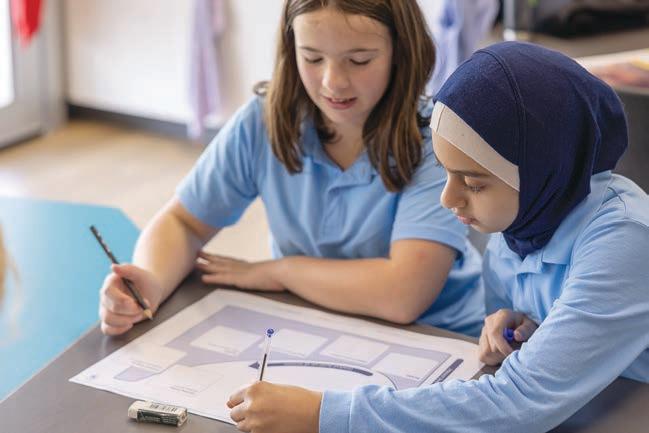
Nazareth Catholic College kick start their students’ writing improvement. But what happens when teachers struggle to find time for professional development?
That was one of the questions Seven Steps explored in a nationwide survey that received nearly one thousand responses from teachers and school leaders across all school sectors.
Seven Steps’ CEO, Kathleen Killick, says the survey responses made clear that Australian teachers are crying out for hybrid learning models, more PD in teaching writing, and flexible training options.
“Teachers are time-poor. This is not a new phenomenon, but it is worsening. Teachers are doing less PD than ever before due to staff shortages, curriculum changes and stricter
in teaching literacy was a high priority for teachers, with more than half of the respondents saying that writing in particular was the area in which students needed the most support.
But it’s not only students who need support in writing; almost half of the teachers surveyed also picked writing as the area where they need the most development in their teaching practice.
This is supported by a recent report from the Australian Education Research Organisation (AERO) which found that teachers across primary and secondary education commonly reported inadequate pre-service preparation in writing instruction and inadequate professional development in the writing domain while working as a teacher.
Based on best-practice pedagogy and supported by years of educational research and the Science of Learning, Seven Steps is an approach that empowers teachers to make writing fun and achievable for all ability levels.
Covering all text types – narrative, persuasive and informative – this author-based approach explicitly breaks down writing into seven core techniques. Students practise each technique using short, collaborative activities before bringing together all they’ve learned to write compelling, complete texts.
What are the Seven Steps?
• Step 1: Plan for Success – brainstorming and generating ideas
• Step 2: Sizzling Starts – grabbing the reader’s attention immediately
• Step 3: Tightening Tension – building momentum and tension in a text
• Step 4: Dynamic Dialogue – using dialogue to make writing more vibrant
• Step 5: Show, Don’t Tell – show, rather than tell the reader, to engage with their emotions
• Step 6: Ban the Boring – use all the techniques to revise and improve a text
• Step 7: Exciting Endings / Endings with Impact – leave a lasting impression on the reader.
Schools who are interested in getting started have a variety of options:
• Teacher Hub – 2-week free trial available
• Whole school workshop
• Online workshops


Bite-sized and on-demand –the new way to learn
The survey results posed a challenge for PD providers like Seven Steps to design quality training options that meet the real-life needs of schools and teachers.
“Time, staffing and budgets are tight. So schools are asking for short, drip-fed training solutions that fit within the school day,” says Sarah Bakker, who heads up the Teacher Resources team at Seven Steps.
So, Seven Steps transformed its awardwinning live training into a series of bite-sized training videos available on-demand on its subscription platform, Teacher Hub. This allows teachers to learn the Seven Steps at their own pace, individually or with colleagues in just 15 to 20-minute bites.
The new on-demand training videos give schools greater flexibility by using a hybrid approach to learn and implement the Seven Steps program:
• literacy leaders can come to live training and then roll out the Seven Steps in staff meetings using the training videos and resources
• schools can bring a Seven Steps expert in to train their whole school, then use Teacher Hub to revisit the learning and roll it out
• literacy leaders can use the training videos and resources on Teacher Hub to learn the program themselves and then train their staff.
What’s more, learning the Seven Steps using these hybrid approaches has many
inherent benefits for teachers, which include:
• Making learning bite-sized – grab actionable insights in just 15 to 20 minutes
• Reducing the cognitive load – learn new concepts in smaller, bite-sized chunks
• Learning by doing – try out the activities before using them with students
• Implementing as they learn – put learning into practice one Step at a time
• Ensuring better retention – refresh learning by rewatching the videos, again and again. Having a hybrid solution that offers training, ongoing support and ready-made resources has allowed Seven Steps to better meet the needs of teachers and schools. “Schools can now adapt the training to suit their own schedule or budget. So, every teacher can now access Seven Steps’ transformative training experience anytime, anywhere,” Ms Bakker says.
A recent survey showed that, since completing the on-demand training on Teacher Hub, teachers feel more confident teaching the Seven Steps, selecting appropriate resources and developing their own customised implementation plans.
Nat Russell, Deputy Principal at Mount Terry Public School, is finding Teacher Hub to be the hybrid learning tool the school needs.
“I am currently championing the Seven Steps to Writing Success strategies at wholeschool professional learning sessions and the staff are loving it. I constantly refer to Teacher
Hub and direct all our staff there,” she says.
And feedback shows it’s addressing the time constraints that teachers are facing right now.
“It has cut down on my planning time for writing,” Laura Potts, a teacher from Edwardstown Primary School, says.
Kristie Mulholland, a teacher at Beverley Hills Primary School, says the comprehensive resources are “ready to go”.
“It takes the load off me and my teaching as I know the lessons are going to be amazing,” she says.
But the key test of success is the impact on the students.
“The best comments I’ve had from my kids were the groans and pouty faces when we didn’t get to our writing lesson,” Rachel Grech, a Year 4 teacher from Iona Presentation Junior School, says.
“On another occasion, when just about the whole class put up their hands for writing when we were voting for favourite subjects, with the comments being ‘I used to hate writing; now it is one of my favourite subjects.’ And then the trail of responses … ‘Same!’, ‘Same!’, ‘Same!’ echoed throughout the class.”
“And this comment: ‘No teacher has ever taught us how to write before, they’ve just told us what to write’,” Ms Grech says. EM
Want more information?
Head to www.sevenstepswriting.com
A global leader in display solutions for education, BenQ’s next generation of large-format interactive screens are the first to offer full support for Google Mobile Services – and come equipped with world-first health-related features.
The BenQ Board Pro RP04 series and the BenQ Board Master RM04 series are the first to ship in Australia and New Zealand and are officially certified by Google Enterprise Devices Licensing Agreement (EDLA).
EDLA, a new program introduced by Google at the end of 2022, is designed to help solutions providers offer devices with built-in GMS.
GMS, or Google Mobile Services, is a comprehensive suite of Google’s most popular apps and APIs, or application programming interface, bundled together and tailored for Android devices, enhancing functionality and user experience. Some apps include Google Search, Google Drive, Chrome, YouTube, and the Google Play Store, among other apps.
Advantages of having GMS on a smartboard
The integration with GMS in smartboards offers many benefits, all of which revolutionise the education experience. The three most important are:
1. Official access to the Google Play Store
The presence of the official Google Play Store allows users to download and install apps onto their board. Having Google Play – with its extensive library of educational games and productivity tools – available on a large interactive screen opens up many possibilities in terms of teaching and work.
2. Seamless integration with Google Tools
Previously, accessing Google for Education tools on large-format displays such as smartboards posed challenges. Now, with GMS integration, users can effortlessly install and access these tools (ex. Google Docs, Sheets, and Slides) locally, streamlining workflows and enhancing productivity.
With BenQ Boards, schools can depend on Google’s built-in security features, like Play Protect, to protect them from malicious apps, phishing attacks, possible data leaks, and data loss. It also safeguards users from downloading potentially harmful apps to their devices and removes previously installed apps that exhibit malicious behaviour, providing peace of mind to educators.

other Google collaboration tools, BenQ Board users can expect the following features:
• A familiar and intuitive UI
The BenQ Board Pro RP04 series and BenQ Board Master RM04 series are covered by the Google EDLA and are the first-ever smartboards from BenQ to offer built-in Google Mobile Services. The new boards seamlessly integrate the latest BenQ hardware and software along with all the advantages of an EDLA-certified device.
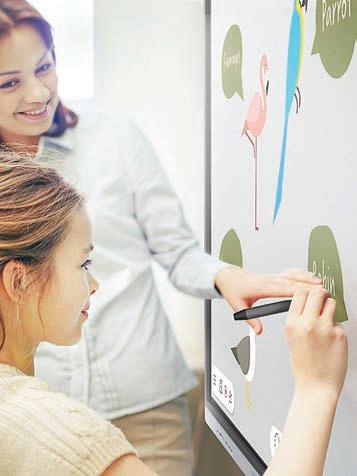
The user interface (UI) of GMSintegrated BenQ Boards has the look and feel of a large tablet. Customise your teaching style by easily moving apps around and changing your screens depending on your teaching style or workflow.
• Powerful education and collaboration tools
All BenQ Boards come with EZWrite, a feature-rich whiteboarding software designed for engaging classes and discussions. It also has InstaShare, a wireless screen sharing solution that gives users more flexible ways to share, present and collaborate.
• Hassle-free centralised management
IT administrators managing existing Google account lists can take advantage of the BenQ Identity and Access Management (IAM) system to synchronise their Google Workspace Directory and immediately carry over all user accounts into the BenQ ecosystem.
Streamline management
School administrators can also streamline management with BenQ’s Account Management System (AMS) and Device Management Solution (DMS) 3.0.

Schools that already have existing Google accounts can easily transition to using BenQ Boards without any extra setup. The BenQ AMS allows IT and administrators to sync their Google Workspace Directory and instantly move user accounts into the BenQ ecosystem.
The BenQ DMS allows also IT administrators to control BenQ Board settings remotely and effectively. With DMS, they can monitor device analytics, manage apps, push device updates, and configure the power settings of both individual and groups of BenQ Boards.
This is the key difference that resonates with teachers and users: BenQ is the only education solution provider that integrates single sign-on and sign-off with all its interactive displays and services.
Single sign-on integration provides teachers with the convenience of using a single set of credentials to log into all BenQ interactive displays and services, as well as other applications deployed by the school.
Log into your device with your school account to access Cloud storage, device and account management, and communication systems without having to log in again. Teachers can scan a QR code with their smartphone for quicker login or use onetap login with their school-issued Near Field Communication (NFC) cards. Once finished teaching, simply tap again with your NFC card to log out of all open applications.
BenQ Boards are the only interactive displays for education with a set of healthfocused ClassroomCare features aimed at prioritising positive learning outcomes without compromising on healthy learning environments.
Both the BenQ Board Pro and Master are the world’s first interactive displays equipped with Eyesafe Certified 2.0 screens, helping to protect students’ and teachers’ eyes from high-energy blue light, which has been shown to cause eye strain and long-term visionrelated issues.
The Eyesafe screens can do this while still maintaining optimal colour performance. The Radiance Protection Factor (RPF) scale is a crucial metric for assessing the level
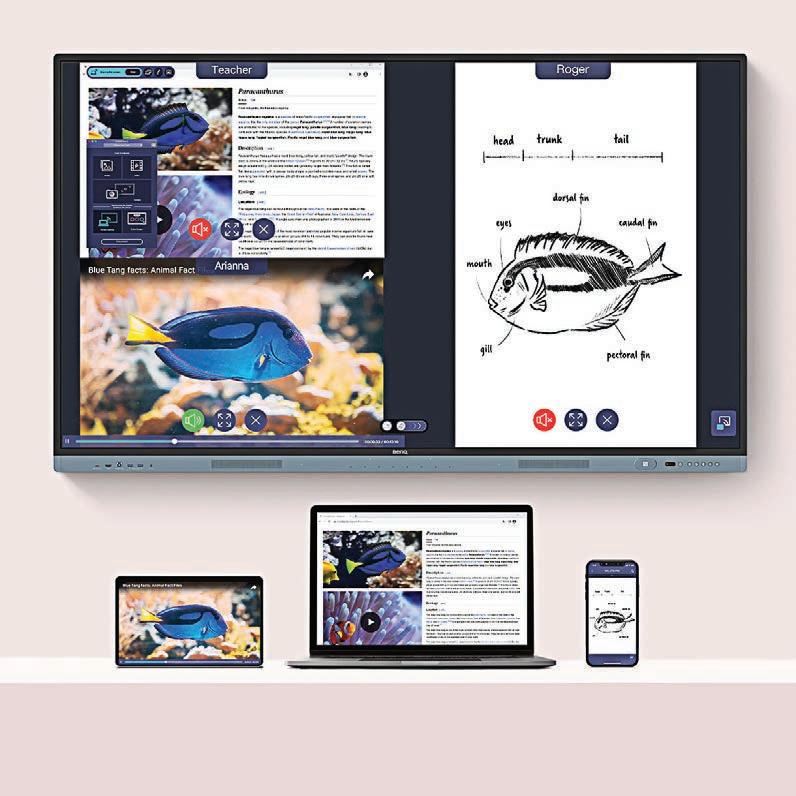
of blue light emissions and their potential impact on eye health. Currently, the BenQ Board Pro RP04 boasts a rating of RPF50, and the BenQ Board Master RM04 achieves a rating of RPF35. In this scale, higher RPF numbers signify a more significant reduction in high-energy blue light emitted by a display, translating to better eye protection.
BenQ Board also features Air Quality Sensors that monitor the levels of CO2, PM2.5, and other toxic pollutants in the classroom. This innovative feature not only has the effect of keeping students more alert, but also improves their cognitive ability, and safeguards their respiratory health.
The RP04’s built-in Air Ioniser helps reduce particulate matter in classrooms and enhances the overall air quality. It works by releasing negative ions, which helps purify the air by decreasing the amount of inhalable suspended particles. There are two ways an Air Quality Sensor and Air Ioniser can be utilised in the classroom:
1. For teachers: Air Quality Sensors provide real time data on key environmental parameters by detecting temperature,
These sensors alert teachers and remind them to take necessary action, whether that be by switching on the air conditioning or simply opening a window.
2. For management: school administrators will be able to check long-term data for Boards installed in classrooms. Through device management software on BenQ Interactive Displays, IT staff can also remotely turn on the Air Ioniser, cleaning the air before students and teachers enter the classroom. Policies can be enforced by school managers to make the purification of classrooms a morning routine, should the air quality metrics be consistently poor from their recorded data.
In addition, BenQ is first in the industry to offer certified Antimicrobial Screens and peripherals, reducing the risk of germ transmission. They have a proprietary nontoxic antimicrobial coating, recognised by TÜV Rheinland that is 99.9% effective against common bacteria and other disease-causing germs, making its solutions safe to touch. EM

Introduced out of necessity due to disruption caused by the pandemic, blended and hybrid learning models are now here to stay. But are teachers adequately prepared? Education Matters investigates.
Early in the 2022 school year, Independent Schools Victoria (ISV) published a report exploring the experience of, and possibilities for, hybrid learning in schools.
It surveyed 83 independent Victorian schools and 124 school leaders and educators, collating its report when some schools were emerging from extended periods of remote learning, imposed as a result of six governmentmandated lockdowns.
The report found participants felt more confident in implementing blended
learning (81%) than hybrid learning (50%). Across all hybrid learning models presented to the survey participants, ISV’s report noted more than half (55%) implemented the differentiated model, where students at home and in-person engage synchronously on the same lesson. This is considered the easiest hybrid model to plug into conventional schedules and instructions, ISV noted.
According to the report, most teachers experienced considerable difficulty in implementing a hybrid model. The biggest
challenge was teacher competency (30%), followed by quality student learning and engagement (27%) and technological issues (24%).
It found teachers were generally less motivated to pursue implementing a hybrid model as they regarded hybrid teaching as a temporary solution during lockdown.
The majority of participants (61%) described a blended learning model as an ideal situation for the future, and about a third (30%) nominated a hybrid model.
What part does technology play?
The survey also explored what kind of changes teachers made in the technology they used and how they were set-up to incorporate a hybrid learning model.
The most common technology used was Microsoft (Teams, OneNote, OneDrive, SharePoint), followed by Zoom, Google (Classroom, Meet, Docs), and learning management systems such as SEQTA and CANVAS, and classroom apps like Seesaw. Other less common technological software and apps mentioned included Compass, Edrolo, Showbie, Firefly and Blackboard.
“Our findings reveal that it will be useful for school leaders to constantly re-evaluate their technological choices to invest in infrastructure that is fit for purpose based on their budget, expertise and digital maturity.”
Teachers reported combining technological and digital tools to provide effective instruction and most established a specific set-up after several trials. However, some reported that they still struggled with audio – particularly listening to remote learners and teaching concurrently.
“Overall, across the hybrid learning models, the differentiated model was mainly adopted as it was considered the easiest to ‘plug into’ the conventional classrooms and instructions in a short period of time,” ISV’s report noted.
It concluded most teachers pivoted as needed in their instruction and made use of various technology platforms and digital tools to ensure learning continued.
“Unsurprisingly,” it said, “the majority suggested that professional learning and ongoing training is important to improve teachers’ digital literacy skills.
“Some mentioned that this is needed to boost confidence in teachers’ technical competency in running a hybrid model, particularly in anticipating potential technical glitches and planning lesson contingency.”
ISV observed a strong desire among survey participants to explore the best technology and
digital platforms for interaction and collaboration between learners in real time, and to create a good face-to-face and online experience.
Those who have implemented hybrid learning were more likely to suggest that its delivery requires an automated, streamlined approach to technology and digital tools across the school for seamless teaching and learning.
Most of this group have encountered issues running a hybrid model and felt that careful consideration is needed to choose the right technology that is user friendly and fit for purpose.
“Overall,” ISV’s report concluded, this will help ensure they end up with tools and technologies that align with the school’s educational goals.”
‘Something you do, not somewhere you go’ When Mr Hassan Baickdeli was a student, ‘hybrid learning’ meant video-recording classes, and being able to play it back later, on Betamax or VHS.
Today, with the capabilities across Microsoft Teams, and collaboration on oneto-one or shared devices within the learning environment, he says education is “starting to become something you do and not somewhere you go”.

Mr Baickdeli is Head of Emerging Technology and Solutions at Lenovo Australia and New Zealand – and parent to a primaryschool aged child.
“My role entails leveraging existing and emerging technologies and the solution stack that sits around those to bring technology to life in order to deliver specific desired outcomes,” he says.
He liaises directly with schools, including principals, digital curriculum specialists, and educators “at the coal face of e-learning”. He says technology for hybrid learning is unquestionably part of their conversations.
“COVID forced a lot of schools and IT departments onto the backfoot; they had to suddenly send laptops out, and support connectivity for students – it was obvious learning had to be done remotely,” he says.
But it wasn’t a new idea.
“I worked with St Catherine’s in Waverley some time ago, where they had the capability for students to dial in when they were sick, and be able to see what was happening in the classroom. But COVID really forced the hand for all schools to go down that path,” Mr Baickdeli says.
“Being a father to a five-year-old prep student during COVID, it was not only a huge eye opener, but a massive impact in relation to the forced requirement of digitisation.”
In his conversations about hybrid learning with educators, Mr Baickdeli says it’s important to get a handle on how they want to teach.
“It needs to be properly thought about from an individual class perspective, as well as an individual educator perspective, because there’s a variety of ages – and digital competencies –among educators; some are new to the school environment having recently completed their studies, others are quite seasoned,” he says.
“It’s about understanding how they want to teach and being complementary to that. For instance, video collaboration equipment might suit some, or taking Microsoft Teams for schools environment and OneNote Class Notebook and doing something as basic as digitising PDF forms so educators don’t need to be leaning over the shoulder of students to see how they’re progressing; they can see that in real time in class.”
As a large technology partner, Lenovo not only provides hardware for hybrid learning,
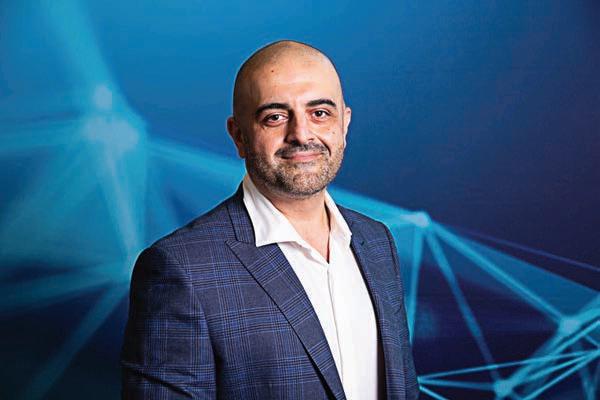
it has also done its due diligence of going into schools, universities, and educational institutions to understand how they’ve been impacted coming out of the pandemic.
“We’re also looking to how schools want to enable transformation and seeing firsthand what could be implemented to achieve that,” Mr Baickdeli says.
To illustrate his point, he describes how Lenovo recently worked with a school on a project about liveability – but the school was physically located 500 kilometres from its closest city.
“The students were wanting to learn about liveability in different locations, but they were isolated from their closest city. To assist, Lenovo leveraged Microsoft Teams; I walked around Chatswood, in inner Sydney where Lenovo ANZ is head-quartered, with a mobile phone, showing the students the streets and infrastructure,” he says.
“As I walked around, I talked about services in the area, public transport, office buildings, residential blocks, et cetera. We started to have an exchange around what the level of poverty is like within the city, what housing is like, how expensive housing is, what services and facilities are available, how multicultural it is.”
He continues: “It was really interesting because these students, who probably haven’t travelled outside of their state let alone visited their closest capital city, were seeing first-hand such a variation in geographical environment compared to their own at home.”
Mr Baickdeli says the next step would be walking students through a digital twin of a city in virtual reality allowing students to see
elements of infrastructure and key service networks, such as power and water supply.
Understanding each school’s hybrid learning requirements and desired outcomes is more important than what kind of technology is used, Mr Baickdeli says, but technology is part of making it happen.
Location – and budget – are not necessarily limiting factors.
“It’s all about the learning outcome. Budget is something you can work with; in one-toone programs, which a lot of public schools have right now, a student has access to a web browser or access to Microsoft Teams through a web browser, even if it’s not a native app,” Mr Baickdeli says.
“It’s about how do you provide experiences that are inspiring, without causing too much administration in terms of planning and preparation and sign-off forms and so forth for travel. It’s about making things easy, but making experiences deliver something richer, such as the liveability lesson.”
Connectivity is slowly becoming something for all, with states like South Australia leading the way with high-speed fibre-optic internet at 99% of schools.
“Depending on where the school is, and its network bandwidth, some educators might run into some challenges teaching with a hybrid learning approach. But there are ways around that. We’ve worked with some exciting partners to be able to deliver high speed connectivity in
rural areas,” he says.
“There’s also the possibility of On Demand, which would allow for bandwidth not to be all in one location at one given time but to be buffered so it’s downloaded to the school’s environment, and then it’s leveraged on the local area network, as the student requires, so it might not be in real time, but as close to as possible.”
How effective is hybrid learning?
Assessing the effectiveness of a hybrid learning model for teachers and students is “a complex question once you look under the hood”, says Dr Stefan Schutt.
For Dr Schutt, a Senior Lecturer in Learning Design (ICT/Digital) in the School of Education at La Trobe University, it’s important to note that the term ‘hybrid’ is an umbrella term that has been used to mean different things.
“A range of models combine face-to-face learning with online learning in different ways. Scholar Lora Bartlett has broken these down into three categories: parallel (happening at the same time but separately), alternating (switching from face-to-face to online and back) and blended (where the two are integrated). There’s also the HyFlex model where students can switch back and forth between online and face-to-face depending on their needs,” he says.
“We also need to consider the huge variety of contexts that such learning takes place in. This is an important consideration because

what might be effective in one context might not be effective in another.”
For instance, Dr Schutt says, for students in remote or regional areas who can’t easily get to a school, or a school working with neurodiverse teens, a model might lean more towards online learning (because some neurodiverse kids actually prefer mediated communication), whereas a metro primary school might place more emphasis on face-to-face learning.
“We also need to consider the ability of students and teachers to access the technology. In some low socio-economic areas, as well as rural ones, decent access to computers and internet – the ‘digital divide’ –remains a persistent barrier to participation in education,” Dr Schutt says.

In addition, the impact of mental health issues resulting from increased isolation are increasingly coming to the fore.
“I’ve heard this concern from schools and others working with teens, and reports from my own daughter who is currently in high school. I’ve also seen it in my own students at the university I teach in,” he says.
Evaluating the effectiveness of hybrid learning also needs to consider the ability and confidence of teachers to use the technology, Dr Schutt reflects.
Overall, he says, there have been some genuine successes in the COVID era with teachers showing incredible flexibility and ability to pivot quickly to online teaching, with some developing innovative and engaging programs in the process.
Others, though, have found the reliance on digital technology challenging.
“US research from the time has revealed a drop in teachers’ sense of self-confidence as their practice changed overnight. We shouldn’t expect teachers to become technology experts, only to be open to trying new ways of doing things – and we need to be as supportive and helpful as possible as they navigate this transition,” Dr Schutt says.
In the foreword of ISV’s 2022 report, Chief Executive Ms Michelle Green wrote that, amid the challenges, the past two years’ experience with hybrid learning suggests there are opportunities for teachers to reimagine how education is delivered in ways that better reflect the emerging and changing needs of their students.
“One particularly interesting area is place-based learning – how can we use technology to augment or add to learning about real places, whether that’s in the sciences, arts or areas like Indigenous studies. Approaches like augmented reality offer promise here.”
Schutt agrees, noting there are several ways that technology-based approaches can be combined with face-to-face learning.
“One particularly interesting area is placebased learning – how can we use technology to augment or add to learning about real places, whether that’s in the sciences, arts or areas like Indigenous studies. Approaches like augmented reality offer promise here,” he says.
So too does virtual reality (VR) and the ability to completely be immersed in other worlds, as well as turning learning into gamebased activities.
Dr Schutt says that although this approach has tended to be the domain of wealthier independent schools that can afford technology like VR headsets, robots, and coding kits, it doesn’t need to be that way, with some lateral thinking and imagination.
“For instance, it’s easy and free to create QR codes that can be placed in real-life locations and turned into games. Another example is the cardboard VR headsets that kids can build and then slot their phones into,” he says.
“Our computers and phones can tap into
many sophisticated onboard and remotely accessible tools that can be used for education, especially education about real life issues and problems – but we also need to be mindful of the impact of educational policy, such as the mobile phone ban, as well as privacy and safety considerations.”
ISV’s report unquestionably demonstrated that many teachers and school leaders share concerns and challenges in implementing a hybrid model. For Dr Schutt, it’s important to recognise that those concerns are real and valid.
“I don’t think we’ve yet reached a ‘new normal’ post-COVID where we have a shared communal understanding of how to study,”
“Before 2020 this was clearer, and the sense I get is that young people, including my own kids, have seen the ground shift under their feet and they are a bit at sea in terms of expectations about when to turn up for school – hence the huge growth in ‘school refusal’ – and how to engage with others in a shared space.”
Mental health issues add to a sense of shifting sands in terms of how to connect and relate to others, and to feel part of a shared endeavour, he says.
“Learning is a relational endeavour and the rules of those relations have become murkier. What is ‘best practice’ now? The COVID shift to online learning was massive, and adding to that is the teacher shortage and increased administrative workloads for those who have stuck it out: where do you find the time to experiment and try things?,” Dr Schutt asks.
In addition to hybrid learning, he says it is equally important to consider the impact that artificial intelligence (AI) is having, and will have, on education – especially in terms of the essay-based assessments many teachers are used to assigning.
“Increasingly, the rapid adoption of this technology – often by students independently – is forcing teachers to think of new ways of teaching and assessing, with greater focus on demonstrating process, such as in problem-based learning, rather than submitting one artifact, such as a written essay,” Dr Schutt says.
“This is a challenge but also an opportunity on how educators can use technology to support this kind of learning.” EM
By automating daily tasks, AI can improve learning experiences, maximise efficiencies and reduce costs – but doing so responsibly takes expertise.
Higher education aims to enhance learning experiences, producing well-informed professionals through expert-led instruction with cutting-edge tools.
With declining spending on higher education, AI emerges as a pivotal solution to optimise limited resources. The National Center for Education Statistics reveals a decade-long decrease in spending, from 32 to 27 per cent in public colleges and from 32 to 29 per cent in private colleges.¹
AI streamlines tasks which enable faculty and students to allocate more time to teaching and learning. The shift from 40 to under 30 hours of student study time can be compensated with AI tools, offering personalised learning through analytics, smart content, and AI teaching assistants.¹
Encouraging AI training programs for students and educators becomes essential for institutions to harness AI’s potential safely and effectively as its role in higher education continues to expand.

When implementing AI in the classroom, the following factors are important:

faculty on how to use AI to create more efficient workflows, find instructional resources, and implement as a teaching and learning tool.
• Redefining assessments based on the new processes and capabilities offered by AI.
• Initiating programs for student-driven AI learning and innovation.
• Educating students on AI bias, copyright infringement, fact checking, and ethical uses.
• Ensuring ethical use of AI by creating policies to support safe and responsible use.
AI has the ability to streamline workloads for everyone in the institution.
AI tools can help faculty reallocate time from teaching preparation and administrative tasks to research and student contact. These tools can:


• Streamline administrative workflows.
• Automate grading.
• Automate parts of lesson planning and teaching material creation.
• Offer recommendations for course improvements.
• Personalise teaching materials to the needs of the students.
• Spot trends in student performance. Faculty and students need support to make the most of their AI experience. The infrastructure that makes learning possible at the institution is built and maintained by administrators and IT professionals who face their own challenges with overwhelm and retention. AI tools offer many of the same efficiency benefits to these professionals but on a grander scale.
Find trusted expertise
Fifty per cent of institutions say the lack of a
back from adopting AI.²
A trusted partner can help schools empower teachers and administrators to improve learning experiences and maximise efficiencies.
Lenovo is the largest global provider of PC’s in the education sector, who established the Lenovo Responsible AI Committee to decide the principles that AI must support in the organisation.
It supports organisations in comprehending and tackling considerations such as privacy, fair usage, diversity, equity, inclusion, and accessibility. EM
Sources
1. U.S. News & World Report, “One Culprit in Rising College Costs: Administrative Expenses,” June 2023
2. Holon IQ, “Artificial Intelligence in Education: 2023 Survey Insights,” February 2023
To learn more, visit: https://techtoday. lenovo.com/au/en/solutions/education

Research indicates a lack of a strategy is the biggest obstacle holding educational institutions back from adopting AI.

To make student learning in the horticultural space easy and fun, JB Hi-Fi Education is partnering with Australian-owned company Vegepod and its award-winning, portable and self-watering raised garden beds.
Ever considered cultivating vibrant vegetables and herbs in your schoolyard?
Gardening is a wonderful way to teach children about nature, science, nutrition and sustainability. However, many schools face challenges in creating and maintaining a successful garden program, for reasons such as; lack of space, time, resources and expertise.
To overcome those challenges, JB Hi-Fi Education is partnering with Vegepod and its innovative raised garden beds – a comprehensive gardening system that empowers schools to cultivate their
own produce through the advantages of container gardening.
A 100% Australian-owned and family operated company, Vegepod’s awardwinning raised garden beds are portable, self-watering, and protective. Vegepods are designed to make gardening simple, enjoyable, and accessible for everyone, especially schools.
About the company
Vegepod was founded in 2009 by Mr Matt Harris, a passionate gardener from the Northern Beaches in Sydney who wanted to

grow his own fresh and organic food at home.
He realised that traditional gardening methods were too time-consuming, labourintensive, and prone to pests and diseases. He decided to create a solution that would simplify and improve the gardening experience for everyone.
Mr Harris developed the first prototype of Vegepod, a raised garden bed that had a self-watering system and protective cover. He tested and refined his product until he was satisfied with the results. He then launched his company and started selling his innovative garden beds online and through retailers.
Since then, Vegepod has remained a family-run business and has grown to become a global brand, with customers in over 15 countries, including the USA, Canada, UK, New Zealand, Singapore, and Japan.
Vegepod has also won several awards, including the Australian Good Design Award, the Australian Business Award, and the Australian International Design Award.
Vegepods are raised garden beds that give you the best of both worlds and more. You get the size of a raised garden bed with all the benefits of container gardening. Not only that, but you also get the benefit of a raised garden bed cover that extends growing seasons and accelerates plant growth –perfect for any Australian climate.
Garden maintenance and watering are minimal compared to a regular garden bed. Vegepod Raised Garden Bed Kits are simply the easiest way for students to grow their own vegetables.
What sizes do Vegepods come in?
Vegepods come in three sizes of garden beds:
• Small: 0.5m x 1m x 40cm, holds 110L of soil, can fit up to 10 plants
• Medium: 1m x 1m x 40cm, holds 220L of soil, can fit up to 20 plants
• Large: 2m x 1m x 40cm, holds 440L of soil, can fit up to 40 plants
Each size comes with a Vegecover, a polyethylene mesh that protects the plants from harsh weather, insects, birds, and animals. The Vegecover also creates a microclimate that enhances plant growth and extends the growing season. The Vegecover can be easily opened and closed with a hinge system, allowing access to the plants and ensuring proper ventilation.

variables on plant growth, measuring and recording plant data, comparing and contrasting different plant species.
at home or at school and cultivated as a renewable resource, instead of something that is instantly available at the market.
Each size also has a self-watering system that consists of a reservoir at the bottom of the bed and a wicking mechanism that draws water up to the roots. The self-watering system reduces water usage by up to 80% and ensures that the plants are always hydrated. The garden beds are made of durable and recyclable materials that are UV-stabilised and food-safe. The garden beds can be placed on any surface, such as soil, grass or concrete and can be raised to a comfortable height with optional stands or trolleys.
What are the benefits of having Vegepod as part of your school’s curriculum?
Vegepod garden beds are ideal for schools, as they provide numerous benefits. They are engaging and interactive, encourage students to learn by doing and to develop skills such as observation, experimentation, problem-solving, communication and teamwork; students can work in groups and conduct different experiments, and decide what they want to grow in the Vegepod.
Vegepod supports the Early Years Learning Framework accreditation and its raised garden beds are educational and cross-curricular. The following examples illustrate how schools can use them in their curriculums:
Science & Maths:
• Growing a variety of vegetables, herbs, and flowers, and learning about their life cycles, characteristics such as nutritional values, and uses.
• Conducting experiments and investigations, such as testing the effects of different
• Learning about seasons and different climates.
Language and art:
• Expressing creativity, such as drawing and painting plants, writing poems and stories about plants, along with making crafts and decorations using plant material.
Health:
• Promoting healthy eating habits and providing fresh and organic produce for the school community.
One of the reasons why Vegepod raised garden bed is a truly unique and innovative solution for schools is how easy it is to set up and maintain, requiring minimal time and effort from teachers and students.
Adaptability and flexibility are also standout features, allowing schools to choose the size, location, and type of plants to suit their needs and preferences. If a Vegepod needs to be moved to another location, the caster wheels on the trolley stands make light work of that task. Vegepod garden beds require less than half the potting mix required for a corrugated steel bed or raised timber bed of the same dimensions.
How do schools get students growing with Vegepod?
In modern life, it’s easy to become disconnected from the planet and to forget that it takes time and effort to grow vegetables. But when children see vegetables growing in a Vegepod, they will understand where food comes from and develop a closer connection to nature.
In addition, they will see that with the right techniques, food can be grown sustainably
This is hugely important for young people to learn – the coming generations are facing huge environmental challenges through rising populations, climate change and pollution. By introducing a small change – learn how to grow your own food – you can positively influence the way they live the rest of their lives, consciously choosing better alternatives for food and living.
Students’ wellbeing and resilience is extremely important today, and research tells us that healthy adolescent psyches can be linked to time spent in green spaces. The benefits of constructive time in garden settings are multiple which include lower anxiety, an increased sense of wellbeing, improved mindfulness, and better concentration, which leads to an improved performance across all academic pursuits. Adding to this, active participation is another key benefit of children’s wellbeing in schools. EM
Want more information?
JB Hi-Fi Education is proud to encourage student curiosity and hands-on learning experiences extending beyond the tech realm by offering to Australian schools Vegepod’s range of garden beds and accessories.
With over 21 years of experience working in the education sector, JB Hi-Fi Education can help design and implement the most effective ICT solutions and more for your educational needs.
To discover Vegepod’s raised garden beds visit www.jbeducation.com.au or contact 1300 746 752.
Three teachers share why they chose Queensland to start or progress their teaching career, as part of a new campaign from the state’s Department of Education.
A new campaign ‘Love to Teach Queensland’ is encouraging teachers around the country, and the world, to teach in Queensland state schools.
The campaign features real teachers and school leaders, like Mr Thomas McKenna, Principal at St George State High School, who shared why he loves teaching in Queensland.
“I’ve taught in New York, Denmark, Europe and Queensland—and Queensland has been the best spot, period!” Mr McKenna said.
“In New York, you teach at one school and that’s where you stay your entire career. In Queensland, I’ve taught in North Coast, Metropolitan, South-East Queensland, Central Queensland, and now I’m in the Darling Downs South-West region,” he said.
Mr McKenna said teaching all over the state has given him opportunities, and helped advanced his career.
“From the Great Barrier Reef to the Outback, Queensland’s got so much variety that you can go and experience. There are a lot of incentives if you go rural and remote too, and the further you go west or north the incentives get higher—you get extra days off, you get a yearly allowance, you get a locality allowance,” he said.
“We moved out thinking, we’ll be back in two years. Now we’re talking, well, which farm are we going to buy?”.
Sharing similar sentiments, Ms Hannah Parsons, teacher at Walkerston State School in Mackay, said she was teaching in New Zealand when her next challenge called.
“Queensland really stood out for me,” she
said. “The support right from the application to the interview process was very seamless.”
Ms Parsons said she applied for a job with the Queensland Department of Education and was contacted about an opportunity two days later.
“I was very, very excited and a little bit nervous—two months to get ready and go over—but I was supported the entire way,” she said.
“The best thing has definitely been the lifestyle. I’m loving getting my coffee in the mornings and walking down to the beach, and the different wildlife here.”

Ms Aveta Elliott, teacher at Helensvale State School, is also featured in the campaign.
She recalled the moment she found out she would be teaching in regional Queensland.
“I thought to myself, okay Central Queensland, I can do that, sounds pretty hot, but you know what, it’s an adventure and that’s what learning is about. It’s about having fun and taking challenges as they come,” Ms Elliott said.

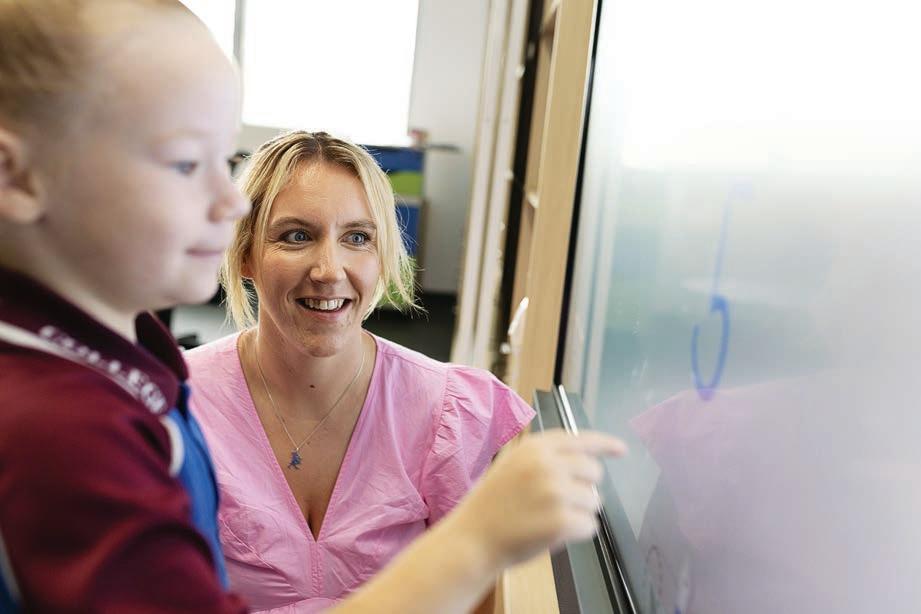

“They were probably the best six years of my life. I didn’t have any stress of how I was getting there— the department helped me move everything, so all I had to tell them was how many things I had and what I needed them to move, and they came and packed it all up.
“Instead of me trying to do all of those things myself, the movers were in and out at no cost to me. And they said, let me know when you get there and we’ll come and unpack it all.”
Ms Elliott said support from the Department of Education helped make the adventure more enjoyable because she didn’t have the relocation logistics to worry about.
“One of the things that I was privileged enough to do while I was in regional Queensland was professional development. Being young and reasonably new to teaching, I valued and took these opportunities as they arose,” she said.
“We were given lots of professional
for a number of years.”
Ms Elliott still has a letter the principal wrote to her.
“She wrote one to every new staff member that basically just said ‘I’m so happy that you’re here, thanks for choosing our school—a small gesture that made such a big difference! It was that level of community and caring that I really enjoyed and learnt from—it made the move worthwhile,” she said.
“I think all of it has just made me into what I hope is a great educator— somebody who goes to work to support kids, to make a difference in their lives, and to hopefully inspire them to love learning nearly as much as I do.”
The Queensland Department of Education recruit for a variety of roles across all learning phases and curriculum areas throughout the year. To find out more about the opportunities available to teachers, and their families in Queensland visit the Teach Queensland website: teach.qld.gov.au. EM
As Queensland’s largest employer of teachers, we can offer you exciting career opportunities in a variety of school contexts—State delivered kindergarten, primary, junior secondary, senior secondary and special education. Our schools offer a range of teaching experiences, from one-teacher schools through to those with more than 2,000 students. You may find yourself teaching single or multi-age classes or teaching across a cluster of schools. All our state schools are coeducational and operate in close partnership with their local communities.
Teachers in Queensland state schools have access to a range of additional financial incentives and benefits, dependant on location, in addition to a permanent employment, professional development opportunities and a salary reflective of your experience and qualifications.
This includes relocation assistance and the generous financial incentives and benefits available to you and your family through the Recognition of Rural and Remote Service scheme.


For detailed information, search ‘Benefits’ at https:// teach.qld.gov.au.
To be employed as a teacher in Queensland, you must be registered with the Queensland College of Teachers. If you are already registered as a teacher in another Australian state or territory, or New Zealand, you may be able to apply for registration under mutual recognition arrangements.
Questions about your eligibility should be directed to the QCT: https://qct.edu.au/
If you’re interested and eligible to teach in Queensland, you can submit an application for employment through our online applicant portal at any time throughout the http://teach.qld.gov.au/apply
If you’re interested in teaching in Queensland but aren’t quite ready to apply, or you would like some extra information, connecting with us is a great place to start. Follow Teach Queensland online or subscribe for the latest Teach Queensland updates: bit.ly/teachqldnews.
Source: Queensland Department of Education

To ensure the National Education Summit focuses on topics that are close to its core, its professional development seminars this year include two new topics that have drawn speakers with near-celebrity status on social media.
AI and sustainability – two of the most prevalent topics in education this year –will feature prominently at the National Education Summit.
When the International Exhibition and Conference Group, the organisers behind the National Education Summit, were planning this year’s event, two areas of education stood out by omission from previous years – AI in the Classroom, and Sustainability in Schools.
For CEO Marie Kinsella, it was imperative that the summit addressed these topics this year.
“The National Education Summit has been designed to support educators at all levels of K-12 education. Principals, teachers, leadership teams and staff will benefit from hearing from leading industry experts and fellow educators all willing to share their expertise and contemporary ideas,” she says.
“AI and sustainability are two areas of focus with schools researching the role that AI will play in Australian classrooms, and incorporating sustainability principles across various subjects and levels. We invite you to meet, under one roof, to connect,
energise and share ideas and experience with each other.”
It’s timely, as the Australian Government Department of Education’s inaugural Australian Framework for Generative Artificial Intelligence in Schools is being implemented in Term 1, 2024.
Key to the framework is the privacy, security and safety of students, with the framework making clear that generative AI tools should only be used in ways that “… respect and uphold privacy and data rights, comply with Australian law, and avoid the unnecessary collection, limit the retention, prevent further distribution, and prohibit the sale of student data”.
In addition to privacy, security and safety, the framework prioritises teaching and learning outcomes, human and social wellbeing, transparency, fairness and accountability.
Minister for Education Jason Clare says generative AI presents opportunities for students and teachers, but there are also risks such as the privacy and safety of school children.
“We will continue to review the framework to keep pace with developments
in generative AI and changes in technology,” he says.
“If we get this right, generative AI can help personalise education and make learning more compelling and effective, and this framework will help teachers and school communities maximise the potential of this new technology.”
In addition to AI in the Classroom and Sustainability in Schools, the key pillars of the National Education Summit’s professional development events include: Capacity Building School Libraries; Diverse Learners; Classroom of the Future, and Wellbeing for Future Focused Schools.
While the National Education Summit’s seminars for teachers will take place in two major cities, Melbourne and Brisbane, the guest speakers at each venue differ.
As one of the key pillars at the summit this year, ‘AI in the Classroom’ will explore tips and tools for using AI in the classroom.
Opening the ‘AI in the Classroom’ session in Melbourne is Dr Raul Rodriguez, Vice President of Woxsen University in

of expertise is the intersection of cognitive psychology with machine learning, deep learning, natural language processing, computer vision, robotic process automation, and quantum AI.
A regular keynote speaker at international events, with more than 22,000 followers on LinkedIn, Dr Rodriguez has co-authored several books in the field of psychology and humantech interface and is a contributing writer to various magazines in the field of analytics and emerging technologies.
His presentation at the National Education Summit, ‘Mastering the Talent-Tech Equation: Thriving in a Rapidly Evolving Digital Landscape’, will address how the intersection of talent and technology presents both opportunities and challenges for next-generation leaders.
This interactive session aims to equip participants with the skills and strategies necessary to navigate the talent-tech equation and become catalysts for innovation. Through an engaging format, participants will explore real-world examples, exchange insights, and gain practical knowledge to excel in an increasingly tech-driven world.
(Dr Rodriguez will also deliver his presentation to delegates in ‘AI in the Classroom’ stream at the National Education Summit in Brisbane in August 2024).
Mr Chris Bush, Head of Student Voice and Leadership at University High School, a public co-educational secondary school in Parkville, Melbourne, will present on harnessing the transformative power of AI.
Mr Bush, who also has a strong online following, will discuss effective prompt engineering for curriculum planning, differentiation, marking and feedback. Participants will learn about the latest AI tools along with their ability to be a game-changer in their learning community.
The closing session in the ‘AI in the Classroom’ stream – How to build a custom AI tutor for your school – will be presented by Mr David Howard, Head of Digital Learning and Practice at Wesley College, a co-educational private school in Melbourne with campuses in Glen Waverley, Elsternwick and Prahran.
During Mr Howard’s workshop, participants will get hands on with a ChatGPT-powered chat bot that students are using to develop enquiry questions.
The bot has been developed by the Digital Learning and Practice team at Wesley College so that it is primed with a prompt to focus on one task.
The session will provide a step-by-step process to create an AI-powered chat bot to deploy for students; no code, no developers, little cost, and unlimited potential.
Brisbane speakers
In Brisbane, the ‘AI in the Classroom’ program will be opened by Ms Miriam Scott, Head of Digital Education at Hillbrook Anglican School, an independent, co-educational secondary school in Enoggera, Brisbane.
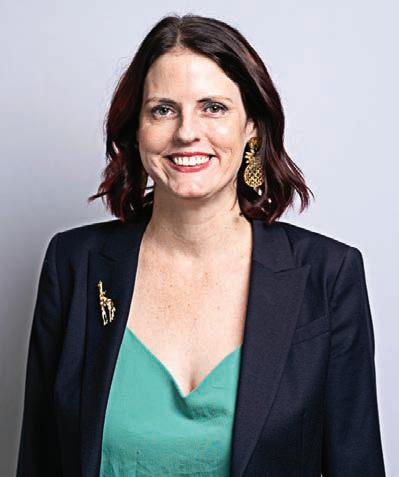
Ms Scott will take participants through integrating ethical use of generative AI in a way that is both purposeful and effective, and how leaders can support staff in this evolving landscape. She will look at using generative AI to “work smarter, not harder”.
Ms Scott is creator of Instagram study tool, @scottybreaksitdown, and the Queensland Senior Business Teachers Group.
Following Ms Scott’s presentation, Ms Kelly Ilich, an academic at Curtin University, will deliver a session on the role of teachers in promoting critical thinking in a digital age.
“In a rapidly evolving digital age, misinformation and extremist views have found fertile ground to grow, leveraging algorithms that often echo and reinforce preexisting biases,” she says.
“This crucial session will explore the intersections between misinformation, extremism, and algorithmic literacy, focusing on the pivotal role of educators in shaping the critical thinking abilities of students.”
This session is suitable for educators at all levels and aims to:
• Equip attendees with a foundational understanding of the relationship between algorithms, misinformation, and extremism.
• Provide practical strategies for educators to promote algorithmic literacy and critical thinking skills.
• Foster a collaborative dialogue on the collective responsibility of educators, tech industry leaders, and policymakers in shaping a resilient and discerning digital citizenry.
Mr Anthony England, Director of Innovative Learning Technologies at Pymble Ladies’ College, will lead a hands-on session on how to get the most out of various AI tools. Participants will need to bring a device.
“There is an art to engineering the right prompt – whether it’s for text, image, video or audio,” he says.
“This is not just about learning skills, but locating these tools within your unique context and so we will have a specific lens on AI in the classroom to aid both the teacher and student.”
Sustainability in Schools
Melbourne speakers
How can schools be more sustainable? How do schools teach sustainability? The National Education Summit is tackling these questions in a conference targeting those in leadership and specialist roles, and classroom teachers.
“Sustainability education in Australian schools is a vital component of the curriculum, aiming to equip students with the knowledge, skills, and attitudes necessary to address environmental, social, and economic challenges for a more sustainable future,” Margo Metcalf, Creative Director, IEC Group, says.
“The Australian education system incorporates sustainability principles across various subjects and levels, reflecting the nation’s commitment to environmental stewardship and responsible citizenship.”
Opening the session in Melbourne is Ms Katie Pahlow, Director of Regions and Community Action at Sustainability Victoria.
Sustainability Victoria has been managing ResourceSmart Schools, an award-winning sustainable schools program, since 2008. The program has helped schools to save more than $45 million in resource costs and avoid over 110,000 tonnes of greenhouse gas emissions.
ResourceSmart Schools assists schools to embed sustainability into all they do by providing a framework of activities, free access to a local facilitator and their own school portal where they can track and measure the impact of their activities.
“Students’ views about environmental sustainability can lead to better learning engagement and a connection and belonging to school,” Ms Pahlow says.
The session on Sustainability in Schools will also include a workshop which will unpack the learnings from a 2023 Google-funded partnership project between Design and Technology Teachers Association (DATTA) Victoria and Environment Education Victoria (EEV).
Mr Peter Murphy, Program Manager at Banyule Nillumbik Tech School on behalf of DATTA Victoria, and Marika Wong, Education and Curriculum Support Officer at EEV, will present
the Digital Design for Sustainability workshop.
The session will demonstrate how schools can develop and deliver their own Digital Design for Sustainability program.
Following the workshop, Ms Jo Connor, Executive Officer at EEV, and Ms Maud Cassaignau, Architect and Urban Designer, will present a session on exploring climate adaptation strategies for school grounds.
“Climate Change has significant implications for schools – from impacts on student cognition, to safe practices around heat, eroded surfaces and extreme weather. Climate Change will require schools to change how they design and use their grounds and manage scheduling,” organisers say.
Ms Connor will speak about the partnership between EEV, RMIT, local schools and council to investigate landscape approaches to climate adaptation in school grounds.
Ms Cassaignau will discuss the research report findings: how students and staff in the Landscape Architecture Design Studios developed and refined ideas at the two school sites in Melbourne’s suburbs, and the themes and key learnings that can be applied to schools generally.
To open the Sustainability in Schools conference at the National Education Summit in Brisbane, Mr Jason Smith, Principal at Tamborine Mountain State School (awarded one of Australia’s most sustainable schools) will explain how the school engages and immerses its students in environment and sustainability programs and projects with support from staff, local businesses and community partners.
Joining him will be Ms Vanessa Bermingham, Head of Innovation and Learning at St Laurence’s College, speaking about integrating sustainability into the curriculum using project-based learning and industry partnerships.
“Embedding sustainability into the curriculum can be a challenge in ensuring that students experience real-world connections and understand that true sustainability is not just ecology, but an integration of multiple disciplines,” she says.
“Integration can be done through Science from years 7-10, through Project Based Learning as the key pedagogical approach

and partnerships with universities and environmental education centres.”
Ms Bermingham’s presentation will explore three different units that can be done in years 7 and 9.
OzHarvest’s FEAST High School Program will be the focus of the closing session, presented by Ms Madison Lucas, FEAST National Project Lead. FEAST (Food Education and Sustainability Training) is designed to inspire students to eat healthy, waste less and become future changemakers and inspire their community.
FEAST addresses the Australian Curriculum in Design and Technologies and Food Specialisations content and combines sustainability and healthy eating in a curriculum ready package for Australian high schools.
Ms Lucas’s presentation will explore the successes and challenges involved in developing and implementing FEAST as a classroom-based sustainable initiative and discuss positive results following from the program. EM
National Education Summit’s ‘Sustainability in Schools’ conference will take place on Friday 14 and Saturday 15 June 2024 at Melbourne Convention & Exhibition Centre, and on Saturday 3 August 2024 at Brisbane Convention & Exhibition Centre.
For more information about the National Education Summit conference and expo, visit nationaleducationsummit.com.au
Reconciliation WA Education Manager Pamela Chatfield explains the peak body’s role in supporting educators teaching First Nations cultures and histories.
Reconciliation WA is Western Australia’s peak body for reconciliation and partners with Reconciliation Australia. We provide leadership, advocacy and support to people and organisations driving the reconciliation movement in Western Australia.
Reconciliation WA’s education team supports educators in implementing the cross-curriculum priority of Aboriginal and Torres Strait Islander History and Cultures and the Aboriginal Cultural Standards Framework.
One way we do this is through developing school-based Reconciliation Action Plans (RAP) with the resources of Narragunnawali, our national partner providing curriculum and professional learning resources for schools and teachers
They are the main provider of RAP resources for schools and early learning services. Last year, we celebrated the success of Winterfold Primary School becoming the first WA school to win the national biennial Narragunnawali Awards for schools with RAPs.
In addition to our ongoing initiatives, we launched the Year 4 Reconciliation in Education Program. As we are located at The Constitutional Centre of WA (West Perth), the hour-long lessons for students at our premises address Civics and Citizenship in the Humanities and Social Sciences curriculum. Our program can be done
by itself or in concert with other programs provided by Constitutional Education at The Constitutional Centre of WA.
The Year 4 Reconciliation in Education Program presents a quality educational lesson designed by experienced teachers and focuses on comparing modern law and traditional lore. Our presenters explore the differences between the Westminster system and the Cultural knowledge of the Traditional Owners of this land from the past 60,000+ years. Through participatory activities such as yarning circles, students are encouraged to formulate their own perspectives on reconciliation.
Our first offering received positive reviews from Year 4 teachers and students who took part in our Year 4 pilot in 2023. Schools can book to do both the constitutional education and our reconciliation lesson on-site or invite Reconciliation WA to their schools to
provide a lesson co-facilitated by an Aboriginal and a non-Aboriginal presenter.
In 2024, we will continue to develop more lessons for upper primary. Teachers who would like their students to take part in the Year 4 program, or in the Year 5/6 program later this year, can enquire on our website or by contacting Reconciliation WA directly (08 6552 6990 or admin@recwa.org.au).
Future offerings around anti-racism strategies and trials are heading our way in the coming months, so stay tuned to our website and social media pages as we launch these resources.
But what if you are not an upper primary teacher? We extend you an invitation to join our Reconciliation Industry Network Group (RING) for Education, where we run events each term that offer educators the opportunity to network with others and learn more about how to implement culturally responsive programs in their classrooms.
Additionally, educators are encouraged to subscribe to our complimentary seasonal newsletter for access to a plethora of events and resources tailored to support their educational endeavours: www.recwa.org.au/ reconciliation-in-education.

We are also the main state provider of National Reconciliation Week (NRW) events. We create booklists and lesson resource links to support schools in running NRW events and teaching in their school. This year’s theme is ‘Now More Than Ever’ and events will run from 27 May to 3 June. Keep an eye on our website (www.recwa.org.au) for further details.
Contact Pamela Chatfield at pamela@recwa.org.au to see how we can tailor support to your requirements. EM
Imagine a resource kit for an entire classroom that students can use to create almost anything. This kit is resonating with teachers because, instead of supporting one concept at a time, it facilitates many overlapping layers of learning, mimicking real life.
The principles of multi-layered learning – making, adapting and integrating ideas–maximise children’s agency and leadership to learn about any given topic, without limits. This kind of learning is far more motivating and genuinely shows a child’s potential, and this motivation can then be leveraged to support their curriculum skills.
This kind of approach can also give students the opportunity to create and express their individual voice, while also learning how to negotiate and collaborate in a group setting.
Freedom of choice increases children’s sense of control and ownership over their learning as they choose tasks suited to their abilities and strengths which gives them confidence and the ability to take risks in
areas they may feel less competent in.
Whether it’s using imagination and creativity, solving problems, developing social skills, or higher order thinking and resilience the Nüdel Kart and smaller Nüdel Rover are award-winning Australian-designed products deeply supporting a multi-layered approach to learning.
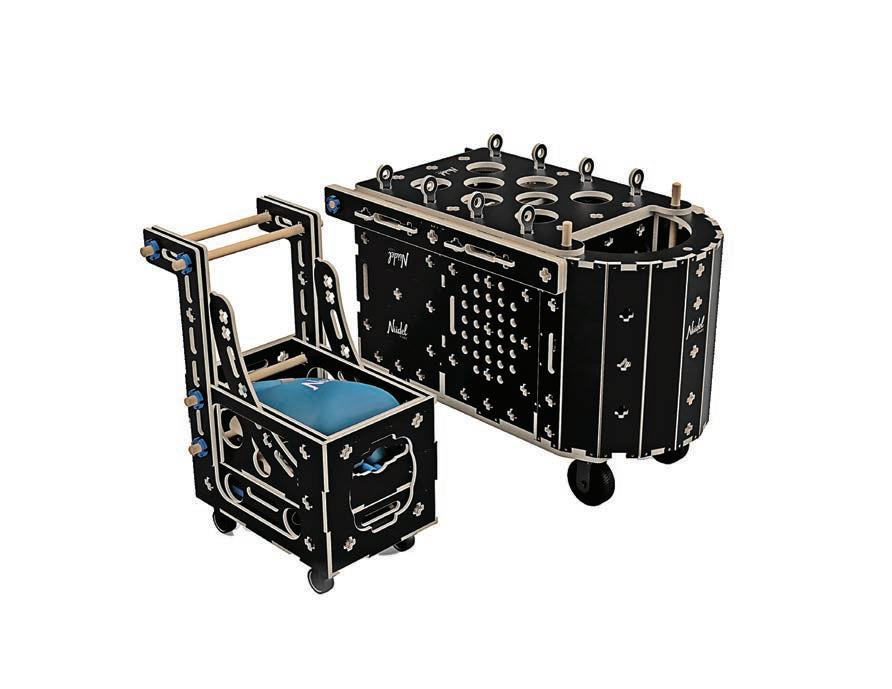
Nüdel Kart, a kit for an entire classroom, is proving popular among students and teachers at hundreds of primary schools around Australia. The all-in-one highly versatile package means schools are driving their dollar – and their student’s learning – further, with one resource that can be adapted for almost any class or
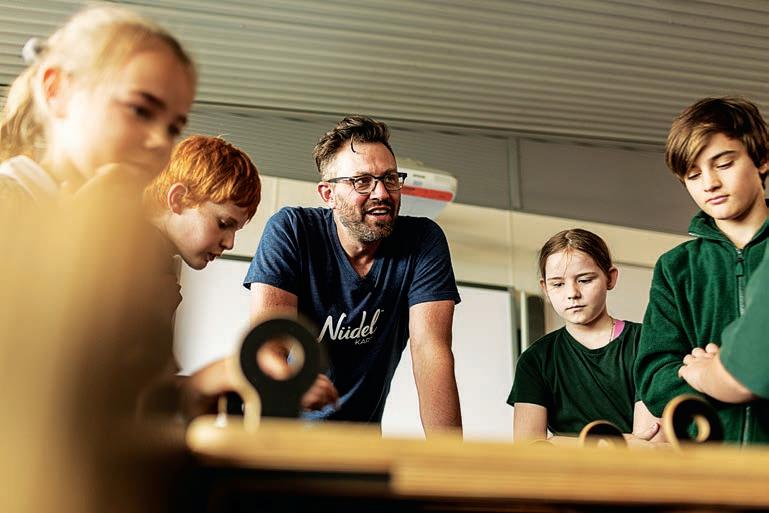
years of global experience in open-ended play-based learning, every part in the Nüdel Kart is meticulously designed to maximise children’s development throughout their primary years.
Founder and CEO Mr Marcus Veerman says research over the last 60 years has consistently and overwhelmingly shown the power of loose parts to support learning.
“Nüdel is a key tool educators can use to build foundational STEM and 21st century skills needed by children to thrive in our modern world,” he says.
The capacity to use the Nüdel Kart as a tool to build these key skills and layered lessons is a common conversation Mr Veerman has with school leaders.
“It’s something we talk about often with schools, and it seems to resonate strongly with teachers. I think that’s because this is the way we all learn in the real world, its messy and organic,” Mr Veerman says.
“When using Nüdel Kart or Rover, kids are learning about design, collaboration, negotiation, as well as developing high levels of emotional wellbeing. Nüdel resources allow teachers to think more holistically about the learning environment and students’ deep needs.”

Nüdels’ capacity for multi-dimensional learning can support skill development across an entire school, not only one class.
“The Nüdel Kart is a principal’s best friend. It has all the parts needed to do everything. It is one tool that you can throw at any problem, be it STEM or numeracy, or when a prop is needed for a drama production. It can also be used as a playground extension or an indoor wet weather timetable space. There really are no limits,” Mr Veerman says.
Children are so diverse and complex in their needs that Mr Veerman wanted to create a tool that was truly inclusive for all, so hundreds of hours of testing was completed to find the right balance.
“Our Nüdel range is universally tested to be highly engaging for all genders and cultures and suitable for children ranging from three to 12-years-old,” Mr Veerman says.
What is Nüdel Kart?
“In five years, Nüdel Kart has gone from a scribble on an envelope to become a fully-fledged, sustainable social enterprise supporting thousands of children to play and learn across the globe,” Mr Veerman says.
The 340-piece Nüdel Kart is about the size of a South-East Asian noodle cart and is delivered to schools flat-packed, but it’s called Nüdel Kart because it supports children to ‘noodle around’ and to ‘use their noodle’ – two expressions Mr Veerman says he has always loved.
Many schools assemble it as a project with their senior students. No drilling is required – all holes are pre-drilled and the only tool necessary is a battery screwdriver and spanner, similar to IKEA furniture.
The Nüdel Kart has enough parts for an entire class (up to 30 children) and the Rover has enough for a small group of up to 8-10. The Rover is most commonly used as a ‘meltdown mitigation’ tool to support unregulated students.
“Schools can always use more than one Nüdel Kart at a time for larger groups. We often run incursions for 90 students and three Karts at a time and the kids absolutely love it,” Mr Veerman says.
The Kart only takes 10 minutes to pack up, and the included pack up cards mean students can do it, making it easier on teachers.
“They have enough to think about and it’s good for the students to take responsibility

wherever they can,” he says.
In March, the social enterprise launched Nüdel Pod, for one to two children, perfect for small enquiries, play and investigation.
The Nüdel range is made from 100% Birch, a flexible and splinter-free plywood timber, and includes some heavy pieces – but that shouldn’t be a deterrent, Mr Veerman says.
“Longitudinal research from the Sydney Playground Project showed that heavy parts are essential if you want high levels of social skills development,” he says.
“Heavy parts cannot be manipulated by only one child and therefore force children to collaborate, requiring higher order social and thinking skills such as negotiation, problem solving, compromise and so on. Small construction toys with tiny pieces can’t allow that. When you see children using the Kart, you can see the difference in their interactions straight away.”
“And texture is so important for children’s sensory needs, so we have left a real woodgrain feel on the edge of the wood, and so many different feeling parts that have different properties to explore to create a sensory experience.”
Nüdel has even gone as far as supplying a maintenance pack to help schools keep their
Kart in its best condition for daily use.
Nüdel also offers Professional Development to schools around teaching and supporting creativity, and how to use the Nüdel Kart to its maximum extent instead of purchasing more resources that can lead to cluttered space.
“Open-ended child-led learning through unstructured exploration and experimentation has traditionally not been seen as an important priority in education,” Mr Veerman says.
“A cramped curriculum, lack of quality resources and spaces are often cited as problems. In some schools, the value of this type of learning may also be questioned by parents, and parent education may also be necessary.”
“Even now, we are still shaking off the shackles of an education system built during the industrial revolution.”
He says children (and adults) need time to consolidate their learning through open-ended spaces where they can explore and express their own knowledge and individuality.
Nüdel provides free 45-minute on-site demonstration of the Nüdel Kart. The sessions can accommodate up to 25 children and includes 30 minutes to observe children using the Kart, plus time for staff Q&A. EM
For more information, visit www.nudelkart.com.
Will the National School Reform Agreement Expert Panel’s recommendations be implemented in the spirit they were intended? asks Dr Naomi Barnes from QUT’s School of Teacher Education and Leadership.

On 19 December 2023, the National School Reform Agreement Expert Panel released a report outlining how the Australian schooling system could be strengthened with the utmost ‘moral and economic urgency’.
The Expert Panel recommended seven reform directions to ‘reduce teacher workloads and empower teachers to lift student outcomes’. In other words, a government can’t demand the latter without addressing the former.
The seven recommendations were:
• lift student outcomes
• improve equity
• improve student wellbeing
• attract and retain teachers
• reduce data gaps and limitations
• enhance funding transparency and accountability
• support innovation and achieve reform.
Within the explanations were some remarkable priority statements showing understanding of the current issues within the teaching profession and schools.
For example, the Panel stipulated that ‘all schools have access to 100 per cent of Schooling Resource Standard funding as soon as possible.’ It is outrageous that there is currently only one jurisdiction (ACT) meeting their school funding obligations.
theme to achieve the reform goals: the development of more national bodies. If all the recommendations are implemented by government, the three organisations that currently oversee the nationalisation of the curriculum (the Australian Curriculum, Assessment and Reporting Authority, or ACARA), pedagogy (the Australian Institute for Teaching and School Leadership, or AITSL) and education evidence (the Australian Education Research Organisation, or AERO) would be joined (or extended) by the following:
1. Curriculum resourcing and earlier screening for learning difficulties associated with literacy and numeracy (Recommendation 1).
2. A national wellbeing register that would collect data on wellbeing measures that are within a school’s control (R3). This would be supported by an investment in specialist staff.
3. A national teacher registration authority (R4).
Dr Naomi Barnes is a Senior Lecturer interested in how crisis influences education politics. With a specific focus on moral panics, she has demonstrated how online communication has influenced education politics in Australia, the US and the UK. She has analysed and developed network models to show the effect of moral panics on the Australian curriculum and how it is taught.
Some of the other recommendations include the linking of allied health to schools, increasing professional support and learning for teachers to manage complex school settings, and a demand for national transparency and accountability in terms of school funding and inclusion.
The Panel also recommends that data collection obligations be reduced, and teacher professional judgement be supported.
Across the seven reform recommendations there is a consistent
4. A data custodian body that will take responsibility for education data analysis (R5). This will be supported by a Universal Student Identifier (USI) which will allow data scientists to disaggregate student data and draw on other government data sources to get a better idea of where to target support.
5. The managing of school transparency data (R6), through ‘an interactive public reporting tool’ which would need similar infrastructure or an expansion of MySchool.
6. A body to manage ‘a structured innovation fund’ (R7). The jury is still out on the effectiveness of national regulatory bodies as they move the authority over teacher practice from the school to the federal governing infrastructure.
The more jurisdictions a body must govern, the less granular they can be in their policy. At the same time, when teacher reform is situated within the State and Federal Ministries, schools can be used as pawns within political games.
The existence of such bodies should, in theory, reduce the hyperactivity of a school system currently subjected to the slings and arrows of the election cycle.
The Panel argues, quite convincingly, that disadvantage needs to be addressed before outcomes can improve. As such, the Panel also recommends that the next National School Reform Agreement ‘should be developed in partnership with key First Nations education representatives’ and ‘also require governments, school systems and approved authorities to build their schools’ capacity to undertake shared decision-making with First Nations parents and community leaders’ (R7).

For more
call Helen on 0427 219 664 or email: admin@thebrowncollective.com.au
The Brown Collective’s flagship program, ‘Leading from Within’ acknowledges the importance of middle leaders to a school’s overall performance. The vast majority of middle leaders want to remain in these roles.
Leading from Within supports and enhances the formation of middle leaders through exploration of key aspects of their leadership such as leading teaching and learning, and leading teams. Every program is customised to ensure contextual relevance to the school, network, region or system that it is being delivered to.
The program is typically conducted over a nine-month period with a minimum of 20 participants. Successful completion of the Leading from Within program enables participants to make application for a 1 unit credit towards a Master’s Degree offered by Australian Catholic University (ACU), Charles Sturt University (CSU) and Broken Bay Institute—The Australian Institute of Theological Education (BBI TAITE).
thebrowncollective.com.au admin@thebrowncollective.com.au
While Ms Dyonne Anderson, a proud Githabal woman, was one of the sitting experts, the bitter pill of this conceivably urgent recommendation is that the Panel also recommends that there not be another Agreement for 10 years.
The reasoning behind this is to allow time for the other reforms to take effect; but it is difficult not to be cynical about the urgent needs of First Nations students in Australia having to wait a decade before nationally representative First Nations experts get a chance to sit at the school reform governance table.
All in all, the National School Reform Agreement Expert Panel report is a hopeful document for implementing reform. But the true impact of this significant document remains to be seen because even the Panel concede that historically recommendations are rarely implemented in the spirit they were intended.EM



In his work with tens of thousands of school leaders in different stages of their professional leadership development, Dr Stephen Brown has found a leadership credo to be a powerful strategy for self-reflection.
Leadership is a lifetime learning activity. Given the act of leadership is carried out by a diverse range of individuals, each being ultimately fallible, imperfect, and profoundly human, then this must and should be the case.
Leaders must commit to learning as a fundamental to enable their growth and maturation in the art and practice of leadership. We all have the capacity to inspire and empower others as leaders, but we must first be willing to devote ourselves to our personal growth (Sims, McLean, and Mayer, 2007).
In most organisations, most people are doing a second job – spending time and energy covering up their weaknesses, managing other people’s impressions of them, hiding their inadequacies, uncertainties, and limitations (after Kegan and Lahey, 2016).
Leaders must accept and wrestle with a presenting paradox or tension that no one will be the perfect leader, but everyone should aspire to be one. All leaders should be their authentic self – bringing their best gifts, strengths, mindsets, and unique personal story to their work. We learn in context, and we learn in relationships with others. Therefore, every new situation and every interchange with other people provides us with the opportunity to shape our leadership further.
strengths and weaknesses; are conscious of their personal biases, values, motivations and the impact of these on their decision making; tend to have better emotional intelligence that enable them to be building positive ‘in tune, resonant’ relationships (after Boyatzis); are more adaptable adjusting their leadership approach in response to the context, feedback and the capabilities of the individuals, teams and stakeholders they are engaging with; build trust and credibility because they are seen as authentic and genuine; are usually effective communicators and constructively address conflict.
Dobrygowski (2016) suggests that ‘selfreflection requires you to question your assumptions and habits and ask whether they are useful in dealing with the world around you’. What are some questions that school leaders should consider as a basis for self-reflection and to enable them to gain greater self-awareness? Here are initial questions and support strategies that school leaders can consider.
field of education. He is the Managing Director of The Brown Collective, focused on the formation of educational leaders and partnering with schools, networks and system to enable sustainable impact. The organisation reflects both his collective experience over 40 years in policy, strategy and leadership development – and that of the remarkable global network he has developed during this career.
A key trait that all good leaders share is self-awareness underpinned by self-reflective practices. The best leaders are the best reflectors. The Centre for Creative Leadership (2023) note that leader self-awareness is the number one trait for any leader in any organisational context.
Self-awareness is a foundational trait that forms the basis for other leadership skills and behaviours. Leaders who are more self-aware arguably have a mature understanding of their
1. What is your ‘why’ as a school leader? Always ‘pivot back to your purpose’. A leader’s ‘True North’ or ‘North Star’ is their orientating point derived from deeply held principles, beliefs, and values. Nicholson (2013) poses this as the ‘compass question’ – what is the gravitational force or reference point that pulls a leader in one direction, rather than another.
The Australian Standard for Principals and the Professional Profiles (2015, 2019) note that one of the professional areas in school leader practice is understanding self before leading others. School leaders need to surface and make conscious their values that inform their individual professional vision and narrative.
A leadership credo or narrative invites leaders to write and share their core values, beliefs about education and their purpose. Such an artefact should also be written in a draft, continually reviewed. When we question what we are doing as educational leaders we should always pivot back to our purpose – our personal narrative or credo.
2. Are you still curious and courageous?
Do you still have the desire, the drive and interest in asking these important questions that you don’t have the answers to? These are the questions that will be challenging, perhaps confronting, but necessary to explore to enable the growth and development of the school you lead. Bushe (2013) notes that individuals, teams, organisations such as schools and society evolve in a particular direction that they collectively, passionately, and persistently ask questions about. Heifetz and Laurie (2001) notes that one can lead with no more than a question in hand.

One strategy that enables leaders to frame those tough, curious questions is the adaptive leadership framework that focuses on leading in situations where there is no clear solution or where existing ones are not effective. Such circumstance sometimes requires courage and a commitment to raising expectations. The refrain from Lieutenant General David Morrison (former Chief of the Australian Army) he uttered in 2013 is one that is useful to continually reflect upon – ‘the standard you walk past is the standard you accept’.
School leaders need to continue to ask those challenging questions with the aspired intent of improving outcomes for all students and staff.
3. What is your internal dialogue?
Muhammad Ali, the iconic sportsman and social activist, noted that ‘the fight is won far away from the witnesses.’ A key reflective practice for you as a leader, is to listen to your inner dialogue. What is your inner voice saying? Typically, such dialogue will focus on time, motivation, and relationships. Such thoughts and feelings can be positive, negative and at the extreme, debilitating. In working with tens of thousands of leaders, managing and moderating inner dialogue is a significant issue. Good leaders will develop practical strategies to manage, cultivate and at times, quell this voice.
“All leaders should be their authentic self – bringing their best gifts, strengths, mindsets, and unique personal story to their work. We learn in context, and we learn in relationships with others.”
These include engaging with a coach, mentor, to learn to embrace ‘your weird’ (after Crowe) and to remember the refrain ‘you are enough’ (after Brown, 2023) to enable positive self -talk.
4. Who is on your leadership team?
Leadership is not a solo sport. What kind of support team do you have to assist you in leading? A useful strategy for all school leaders to consider is establishing a personal Board of Directors (after Collins, J). Typically, a Board of Directors would have directorship for a peer, cheer leader, connector, coach / mentor, and innovator. These categories can be moderated and augmented depending on the needs of each leader. A personal Board of Directors help us to navigate those liminal spaces and sustain our energy for leadership. Adam Grant in his text, Hidden Potential (2023) notes that all leaders and individuals need various forms of scaffolding such as mentors to enable growth and potential to be realised.
5. How do you capture learning as a leader?
“We do not learn from experience. We learn from reflection on experience.” The seminal
framework of John Dewey is one that is a useful tool for leaders to ‘catch their learning’. His taxonomy of questions is of:
What? – What was the situation? What Happened?
So What? – So what worked or did not work? So what is the impact?
And Now What? – Now what will I do differently? Now what are my next steps?
This framing set of questions with other related strategies such as coaching, Board of Directors, feedback in various mediums are useful ways to enable leadership development.
6. Asking core questions
Nicolson, N (2013) notes that the self is a work in progress. It is a hall of mirrors. Leaders can claim it as their own and take command. This is some of the hardest work that a leader will ever do. The challenge for each of us as leaders is to turn reflection into practices. Leadership is ‘a verb, discovered in action and demonstrated in application’ (Westfall, 2019). Our growth as leaders should be continuous but never complete.
Augustine Rodin’s iconic bronze statue, Le Penseur, ‘The Thinker’, was recast 28 times since the original in 1902. The challenge, analogously, is not dissimilar to the one we face as leaders. We need to evolve, refine, and look at the same subject, ourselves from different perspectives. Good leaders ask great questions. For our renewal and continuous development as a leader we need to engage in self-reflection based on asking ourselves core questions – questions to lead by. What are your questions? EM
In contemporary education, data collection and presentation are pivotal as instruments for measuring both teacher and student performance, writes Dr Hugh Gundlach, from the Faculty of Education at The University of Melbourne.

Data insights serve as a basis for discussions among students, teachers, parents, leaders, and policymakers. While numbers and statistics can sometimes take precedence over other important issues in a rounded education, ideally, data can be used to improve student learning outcomes through superior feedback, relevant differentiation, and improved teaching practice.
Data, in its essence, serves as information that aids in assessing past or ongoing situations and informs future decisions. The reliability, relevance, and validity of data are critical considerations. While numbers are a prevalent form of data, it’s worth noting that numbers alone can sometimes create an illusion of accuracy that may not align with the quality of the source data.
Ensuring data documentation is comprehensible, verifiable, and reusable is essential, especially when data is intended for use by others. Recording the ‘When, why, and by whom?’, as well as the methods or instruments used, is important when reporting results.
projects tend to provide such data directly, but with the prevalence of online learning platforms, metadata (data about data) can also be useful. Metrics like student visits to subject pages, draft submissions, submission punctuality, engagement with materials (eg, file downloads), and forum interactions all contribute to understanding of students’ performance and progress.
Supporting differentiation
Data enables teachers to gain insights into the readiness levels of their students. Armed with this knowledge, teachers can tailor lessons to suit individual learning profiles.
Ultimately, data provides an informed basis from which to discern specific needs, provide additional support, pinpoint those in need of extra support or enrichment, facilitates strategic grouping for personalised instruction, such as tutoring, mentoring, or individualised learning plans, and offer enrichment opportunities ensures that teaching is student-centric rather than content-centric.
It’s not just about student data
Dr Hugh Gundlach is a lecturer in Business Studies and Commerce Coordinator in the Faculty of Education at The University of Melbourne. He completed a PhD in Education under the Research Training Program Scholarship and the Department of Education’s ‘Strengthening Teachers’ Grant, investigating teacher wellbeing and retention. He is one of the Australian Council for Educational Leaders’ New Voices in Educational Leadership Research.
Textual and visual representations, such as charts, graphs, plots, and dashboards, offer invaluable insights into achievements, progress, benchmarks, and comparative analyses, but can also be easily misrepresented.
Feedback on students’ performance allows them to identify where they may individually or as a collective need development. Assessments, be they informal or formal, formative or summative, immediate or delayed, often serve as sources of data.
Quizzes, tests, polls, assignments, and
Data is not solely for the benefit of students and parents; it holds tremendous potential for educators too, of course. By collecting and analysing a range of quantitative and qualitative data beyond students’ results, teachers can evaluate the effectiveness of their teaching methods, the quality of materials, and the overall learning experience.
Such data may encompass whether sufficient time was allocated to each topic, the completion status of instructional units, the quality and robustness of materials, student engagement levels, teacher confidence, the effectiveness of questions posed, participation in class discussions. This aids

continuously developing.
In the ‘Capstone’ subject in the Master of Teaching Student Internship program in the Faculty of Education, The University of Melbourne, teacher interns embark on a year-long ‘self-study’ project. This entails the collection and analysis of data with the primary aim of enhancing teaching performance and improving student learning outcomes. These interns work in diverse school environments across Victoria, each conducting a personalised research project tailored to their unique context, situation, and research interest.
After setting a research question and conducting a literature review, interns design a method of data collection and analyse their data to produce insights that can be generalised to a wider audience for a publication and presentation at the end of the year within the subject cohort.
Restrictions are placed on the nature of the data gathered and method used; nothing that requires Human Research Ethics approval may be performed. This ensures that the experiences, privacy, and rights of all school stakeholders are safeguarded, and the interns’ regular teaching responsibilities remain unaffected.
projects, it is stimulating to help interns brainstorm sources of data that can help them reflect on their own practice.
A wide array of data sources is available, extending beyond conventional assessments and standardised tests. These sources include ABCD cards, entry and exit slips, learning logs, low-stakes writing, mini whiteboards, portfolios, surveys, polls, short-answer questions, and calculations.
Teachers can also generate data directly through sources such as portfolio materials, field notes, critical friend feedback, observation records, notes on student-produced documents and artifacts, diaries, reflective journals, and photos and videos of non-sensitive content (eg, classroom layouts, student work).
Sometimes the interns find that there is not enough data from the student work, so we supplement with other contextual data and reflection. Similarly, individual data points may have limited insights, but their true potential emerges when collected over time, across diverse students, and complemented by relevant metadata.
For interns (and audiences) who might not see patterns in numbers as well as others, the visualisation of data through various
and samples, can effectively convey nuanced narratives.
In the Capstone program, the interns are challenged to consider what knowledge and skills are measured by the assessments schools use, whether relationships between concepts are correlational or causational, and whether certain concepts may be ‘leading’ or ‘lagging’.
As an example, the topic of student engagement is always popular to study, and it often leads to deep thinking about whether it can be validly and reliably measured; whether it is a cause, product or by-product of great learning, and even whether it is necessary for learning. In this way, engaging in thinking and discussions about the data we generate, gather, analyse and use in our daily roles can lead to questioning assumptions and professional learning.
When used effectively, data empowers educators to make informed decisions. It bridges the gap between theoretical insights and practical classroom application, ultimately benefiting both educators and students. Consider running a workshop, panel, discussion or professional learning activity with your team to explore how rethinking data and data sources could benefit your learning context. EM
Education Services Australia outlines its work in this space.
This question reflects the need to balance AI’s transformative potential with the complexities it creates as use of this emerging tech spreads through classrooms in 2024. Last year, this balance was central to discussions about AI in education, focusing on academic integrity, student privacy, equity, and access for all students.
As technology continues to advance, a surge in AI-enabled educational products is expected. Recognising this, Education Services Australia (ESA) has been proactively collaborating with key educational bodies to address the challenges of Generative AI in education. The shared goal of these collaborations is to ensure safe, ethical, and practical use of AI in classrooms.
Making AI safe and fair for education Navigating the challenges of student privacy and academic integrity in the age
of AI is complex, especially considering the potential for its misuse. Adding further complexity, the accessibility of advanced technological tools varies across different demographics, potentially widening the digital divide and counteracting the benefits of AI.
Highlighting these challenges, the ESA-commissioned report, AI in Australian Education Snapshot: Principles, Policy and Practice (August 2023), underscores need to establish a base level of safety addressing privacy, integrity, and equity as prerequisites for the broader implementation of AI tools in classrooms.
To address this, ESA’s 2023-24 NSIP (National Schools Interoperability Program) workplan is introducing a new workstream. It will investigate expanding the Safer Technologies for Schools (ST4S) initiative to encompass assessments for AI technologies, building on the success of
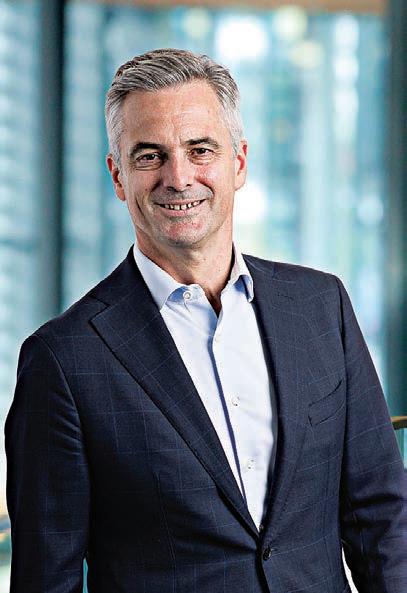
Security Technical Standards Framework, updating the current ST4S initiative with specific privacy and security guidelines for AI-powered educational technology. Additionally, Human Rights and Wellbeing Standards will be established to validate developer claims of explainability, nondiscrimination, and contestability in AI

Creating policy to guide educators
In 2023, a National AI Schools Taskforce, comprising government members of key educational bodies including ESA, was formed to create best practice frameworks guiding educators on using AI in Schools. To ensure a comprehensive and inclusive approach, the Taskforce engaged in extensive consultations with various stakeholders, including First Nations representatives.
Their efforts culminated in The Australian Framework for Generative Artificial Intelligence in Schools (November 2023), which led to lifting the ban on AI products in schools from Term 1, 2024.
Following this, ESA was tasked with creating ‘product expectations’ for AI

technologies in education, to ensure safe, fair and effective integration into classrooms. The creation of these expectations will be managed through the aforementioned ST4S workstream, as well as a collaboration with the Australian Education Research Organisation (AERO).
Ensuring AI is practical for schools
Integrating AI into education faces practical challenges in proving its effectiveness and maintaining safety. It’s important to understand AI’s impact on learning outcomes, teaching methods, and educator workload. ESA’s AI in Australian Education Snapshot report covers addressing these concerns in its medium-term actions, suggesting targeted research to help proactively future proof the education system.
ESA will collaborate with AERO to research and ascertain the effectiveness of AI tools in enhancing the learning experience, ensuring these technologies are safe and align with educational goals. This includes safeguarding against risks to student data and privacy over time, a key concern given the rapid evolution of AI technology.

To implement AI in education safely, it’s crucial to develop dynamic, ethical policies. There is a need for adaptable strategies for complex challenges in this rapidly evolving field, as highlighted in the long-term actions suggested in ESA’s AI in Australian Education Snapshot report. But beyond this, practical, user-friendly and quality-assured teaching tools must be created.
Education Services Australia offers such tools to help educators adapt amidst the rapid pace of change, including Scootle, a free national online library of curriculumaligned resources. With thousands of links to online resources covering a wide array of subjects including AI, teachers can find lesson plans, create learning paths for students and curate their own personalised libraries of teaching materials.
Workforce needs will evolve in response to new technologies like AI, as highlighted in the Productivity Commission’s 2023
Interim Report. To support educators in preparing students for the transition to work in a rapidly changing environment, myfuture offers freely available career planning tools and webinars covering industry profiles and emerging jobs.
ESA is committed to working with key educational bodies to provide support to schools that helps ensure the safe, ethical and effective use of AI in classrooms. To keep up with developments, educators can sign up for a monthly education newsletter or check the news and articles section of the ESA website. EM
There’s something quite different in the tone and tenor of conversations about online safety compared to almost nine years ago when eSafety first started – and it’s a change eSafety Commissioner Julie Inman Grant finds reassuring.
Discussions about the digital experiences of children and young people are now more nuanced, with greater focus on building their capacity to harness the positives and develop strategies to cope with the challenges.
Educators, parents and carers are starting to embrace the notion that young people don’t differentiate between their ‘online’ and ‘offline’ worlds – it’s just life.
And there is a growing recognition that harmful experiences are not just about how others treat us online. Harmful experiences can occur because of the very systems and processes that govern an app, game or device. (One example is the role of algorithms in serving up increasingly harmful material, such as disordered eating videos or content promoting violence and gore.)
In short, our conversations about the online safety of children and young people are more sophisticated, informed and complex. More grey, less black and white.
This vibrant and constructive conversation was abundantly evident on Safer Internet Day on 6 February. I would like to congratulate Australian schools and educators for their role in reaching thousands of students, parents and carers with our message to ‘Connect, Reflect, Protect’, even as they kicked off another busy year of learning.
But there is one conversation that remains somewhat of a sticking point for many adults: the merits (or harms) of online gaming. Let’s face it, it’s an activity many of us find bewildering, but conversations about online gaming must be had with all the grey we can muster.
To coincide with Safer Internet Day, we released research into the online gaming experiences of children and young people,

and it showed gaming can bring huge benefits. Gaming makes young people happy and provides an escape from tough times. It connects them to their friends, helps them learn and offers mental health benefits. Over 40 per cent of young gamers said it benefited their emotional wellbeing and almost 60 per cent said it improved their social connections.
On the other hand, around 40 per cent had negative experiences, which included bullying-type behaviours. On top of that, a small minority had experienced other players doing or saying things that made them feel uncomfortable. This could include asking personal questions, being too friendly or asking them to keep secrets. These types of interactions could be an indicator of, or precursor to, someone building a relationship with a child with the intention of sexually abusing them – also known as grooming.
The combination of positive and negative experiences highlights the common paradox of the online world: incredible benefits exist alongside great harms which we must be alert to.
How can educators and schools work in partnership with families to empower students to safely harness the benefits of an activity that is mostly played at home?
When it comes to online safety, parents and carers need to be the front lines of defence, but you – educators – are the reinforcement. And by encouraging parents to go to eSafety.gov.au, you’ll help them play ‘online defence’ a lot more effectively:
1. If parents or carers are raising concerns about managing gaming-related behaviour at home, or have questions on how to keep their child safe while
they’re gaming, let them know that eSafety has a wealth of parent-specific online safety advice, including for online games, at eSafety.gov.au/parents. We’re also running webinars for parents on online gaming.
2. In cases where a parent says their child has been bullied online, let them know they can report it to eSafety.gov. au/report. We have powers to remove seriously harmful content, including cyberbullying of an Australian child, when it’s reported to us by the victim or their authorised representative, such as a parent or carer.
3. If a parent or carer has concerns about a child’s wellbeing related to their online lives, follow your school or sector procedures for advice about making referrals for additional support. The headspace guide on gaming for families and friends can help determine when more support might be required and pathways for accessing more support.
4. And finally, we have your back as much as we do that of parents. We’re here to help you play the role of ‘reinforcement’. From kid-friendly animations to curriculum-aligned teaching and learning activities, we can support you to instil the 4 Rs of online safety – resilience, respect, reasoning, and responsibility –at eSafety.gov.au/educators. EM
To list an event in our calendar, email rhiannon.bowman@primecreative.com.au

MARCH
Schools Clean Up Day
1 March cleanup.org.au
NAPLAN Testing
13-25 March nap.edu.au
Earth Hour Schools Day
22 March earthhour.org.au
Australian Secondary Principals’ Association National Summit 26 March aspa.asn.au

MAY
Highly Accomplished and Lead Teachers (HALT) Summit
9-10 May aitsl.edu.au
National Reconciliation Week 27 May – 3 June reconciliation.org.au
JUNE
National Education Summit, Melbourne
14-15 June
nationaleducationsummit.com.au
JULY
Schools Tree Day 26 July
treeday.planetark.org
AUGUST
National Education Summit, Brisbane
2-3 August
nationaleducationsummit.com.au
National Science Week 10-18 August scienceweek.net.au
EduTECH Australia, Melbourne
13-14 August terrapinn.com/exhibition/edutechaustralia
Book Week
17-23 August cbca.org.au/cbca-book-week
It Takes a Spark STEM conference – Queensland 30 August spark-educonferences.com.au/ queensland-2024
R U OK? Day 12 September ruok.org.au
APPA/NZPF Trans-Tasman Conference, Christchurch, NZ 18-20 September appa.asn.au
It Takes a Spark STEM conference – WA
18 September
spark-educonferences.com.au/ western-australia-2024
It Takes a Spark STEM conference – Victoria 24 October
spark-educonferences.com.au/ victoria-2024
World Teacher’s Day 25 October
worldteachersday.edu.au
National Recycling Week 11-17 November recyclingnearyou.com.au/ nationalrecyclingweek
It Takes a Spark STEM conference – Tasmania 29 November
spark-educonferences.com.au/ tasmania-2024


Welcome to People on the Move, Education Matters’ bulletin to keep the Australian education sector updated on new appointments and personnel changes.

Acting CEO steers ACARA into new year Stephen Gniel joined the Australian Curriculum, Assessment and Reporting Authority (ACARA) as its acting CEO in November 2023, following the resignation of David de Carvalho. Gniel was seconded into the role from Victoria where he is CEO of the Victorian Curriculum and Assessment Authority. His secondment into the role extends until the recruitment process is complete and a new appointment commences.
Image: ACARA

Queensland premier Steven Miles appointed Di Farmer Minister for Education and Minister for Youth Justice in December 2023. Her responsibilities include state schooling, early childhood education, higher education, non-state school funding and youth justice. She previously served as Minister for Small Business and replaces Grace Grace as Minister for Education.
New president leads ASPA in 2024
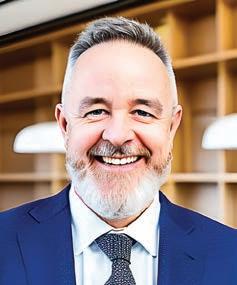
Former principal Andy Mison has succeeded Andrew Pierpoint as president of the Australian Secondary Principals’ Association (ASPA), taking over in October 2023. Mison has previously contributed to the development of the Australian Curriculum in the arts and the implementation of remote learning and vaccination initiatives during the COVID-19 pandemic.
Image: ASPA


The Australian Institute for Teaching and School Leadership (AITSL) Board has appointed its Deputy CEO, Edmund Misson, as acting CEO, following the resignation of Mark Grant. Misson has been with AITSL for almost the entire life of the organisation, and has extensive experience in the education sector. Grant resigned in January to take up the role of Deputy Secretary (Chief Operating Officer) at the NSW Department of Education.
Image: AITSL

responsible for achieving Grok’s vision of enabling teachers to confidently deliver the digital technologies curriculum to all students around Australia with free, classroom-ready resources and ongoing teacher professional development.
Image: Queensland Department of Education
Image: Grok Academy
Not-for-profit finds new CEO in its ranks
Australian Schools Plus welcomed Sherrill Nixon as new CEO in November 2023, continuing its strong commitment to equity in education for all Australian children. Nixon, who joined Schools Plus in 2014, has led its donor relations team to raise over $62 million in philanthropic support to help children and young people facing disadvantage thrive at school. Nixon succeeds Schools Plus’ founding

The Early Learning Association of Australia (ELAA) named Andrew Cameron as its new CEO in November 2023. ELAA is the national peak body championing excellence and equity in early childhood education and care, and supporting parents and service providers. Prior to joining ELAA, he was CEO of work-integrated social enterprise Helm, which supports 15–24-year-olds.
Image: ELAA
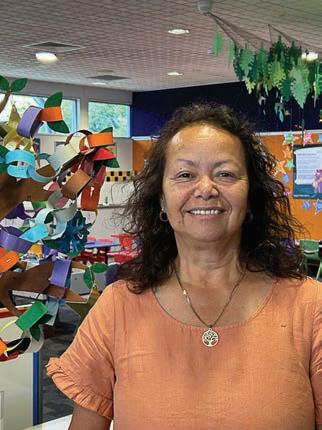
Flexible Schools has appointed WaanyiGangalidda and Wankamadla woman Elizabeth (Liz) Kupsch as its inaugural Director of First Nations Education. Kupsch has worked in education and Indigenous affairs at organisations including Reconciliation Australia, the CSIRO, Education Queensland and the Stronger Smarter Institute.
Image: EREA
If you’d like to tell the sector about a new person in your school, company, institute or not-for-profit, please send the person’s name, position, image and a short description about their role to editor Rhiannon Bowman for consideration at rhiannon.bowman@primecreative.com.au.
AGRICULTURE FARMING
WASTE MANAGEMENT RESOURCE MANAGEMENT
CONSERVATION MANUFACTURING RESOURCES
ENERGY HEALTH & SAFETY INFRASTRUCTURE ENGINEERING MINING CONSTRUCTION
QUARRYING AGRICULTURE FARMING EDUCATION WASTE MANAGEMENT RESOURCE MANAGEMENT CONSERVATION MANUFACTURING RESOURCES
ENERGY HEALTH & SAFETY INFRASTRUCTURE ENGINEERING MINING CONSTRUCTION
Our interactive displays are smart, simple and secure thanks to our innovative, uncompromising software. Our software is intuitive yet powerful enough for teachers and IT, making it an easy installation and ongoing usage.
QUARRYING AGRICULTURE FARMING EDUCATION
WASTE MANAGEMENT RESOURCE MANAGEMENT
CONSERVATION MANUFACTURING RESOURCES

Cloud Storage and Personalisation AMS
Centralised Device Management DMS
Account Management IAM
ENERGY HEALTH & SAFETY INFRASTRUCTURE ENGINEERING MINING CONSTRUCTION

QUARRYING AGRICULTURE FARMING EDUCATION
WASTE MANAGEMENT RESOURCE MANAGEMENT
Securely access your personal settings and cloud storage on any BenQ Board using your school account such as Google Workspace. Enable secure single sign-on (SSO) and sign-off to personalised settings with a single tap of your NFC card.



Easily monitor the status of all your BenQ devices on a single dashboard. With our device management system, you can install, update and remove apps, as well as push OTA updates on one or more
SEARCH FOR TOP INDUSTRY TALENT THROUGH OUR JOBS BOARD.
CONNECT WITH ALIGNED CANDIDATES.
BOOST YOUR CHANCES OF FINDING SKILLED APPLICANTS.
Manage user accounts for all BenQ devices on one console. Sync your school’s Azure Active Directory, Google Workspace, and any other user directories to make management secure and easy for all administrators.
SCAN TO CREATE AN ACCOUNT TODAY AND DISCOVER YOUR PERFECT MATCH!
Scan here to read more about BenQ’s Management Software for Education


